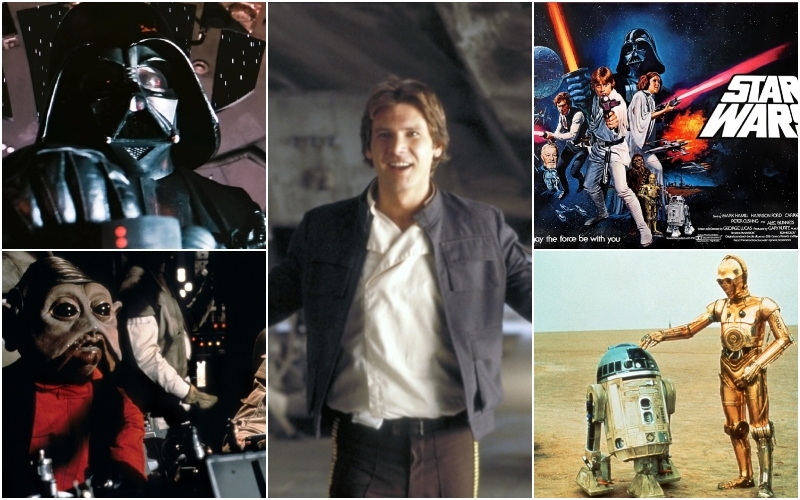
But for everyone else, it was so much more, changing the landscape of movie culture—with the films focusing on the Galactic Civil War between the dictatorial Galactic Empire and the Rebel Alliance.
Big Mistake
When it came to signing a contract with James Earl Jones to fill in Darth Vader's voice, George Lucas offered him a choice: He could take a salary of $7,000 for his work or royalties off the back end of ticket sales. Back then, $7,000 was a decent amount of money, so Jones took the cash, which turned out to be a costly mistake.
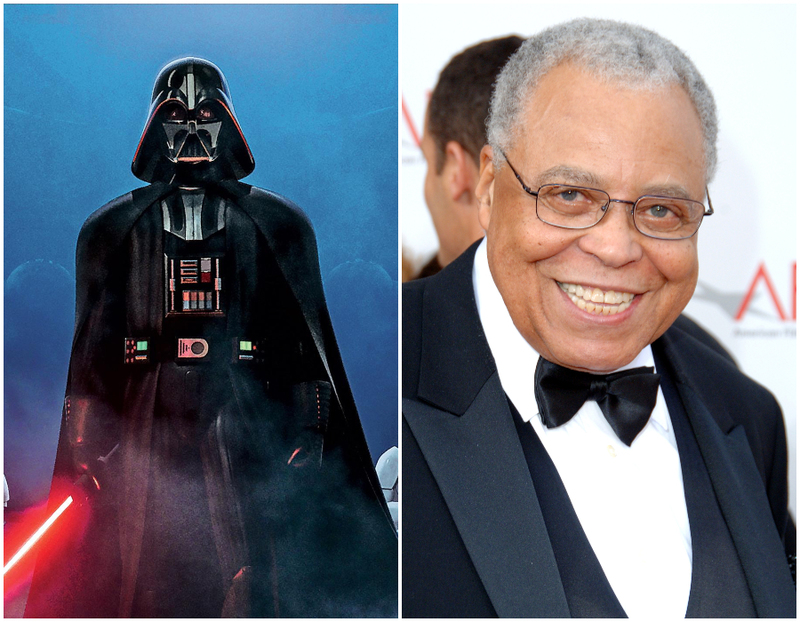
Had he chosen the alternative, he would have earned far more; Jones admitted years later that the decision cost him "tens of millions of dollars." In comparison, Sir Alec Guinness took the royalties - and his heirs have earned an estimated $95 million for his work in the first "Star Wars" film.
The Rebel Troops on Hoth
While filming "The Empire Strikes Back," the scenes set on icy Hoth were shot in Finse, Norway; Rebel soldiers move into the trenches to protect the base so transports can escape. The actors playing these soldiers were all Norwegian mountain rescue skiers.
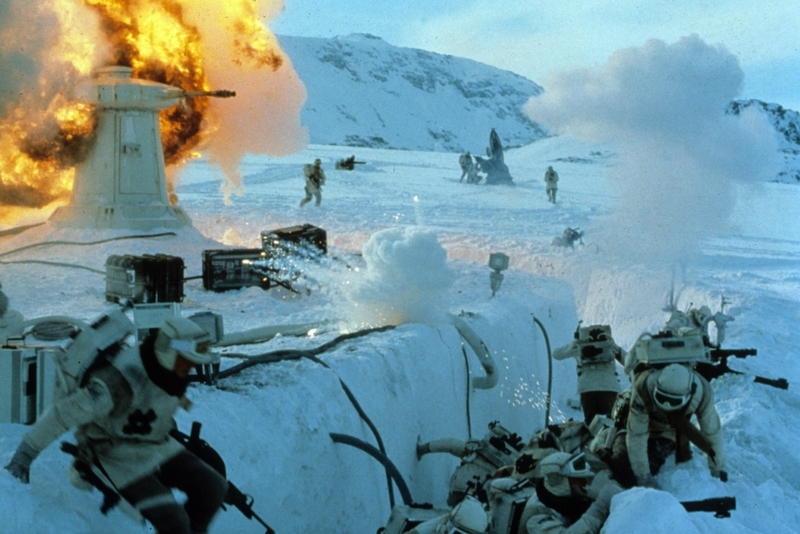
In appreciation for their work, Lucasfilm's production company donated to the Norwegian Red Cross. None of the skiers spoke English, so giving them directions proved somewhat challenging; Peter MacDonald, the second unit director, had to act out what he wanted them to do.
George Lucas's Insistence on Vader's TIE Spiral Made a Sequel Possible
Nearing the end of "A New Hope," Darth Vader's TIE fighter was hit and spiraled away — which ends up preserving his life when the Death Star Spaceship blows up, but the scene almost played out differently. George Lucas insisted on adding the scene late in the film's production, solely to make room for a sequel.
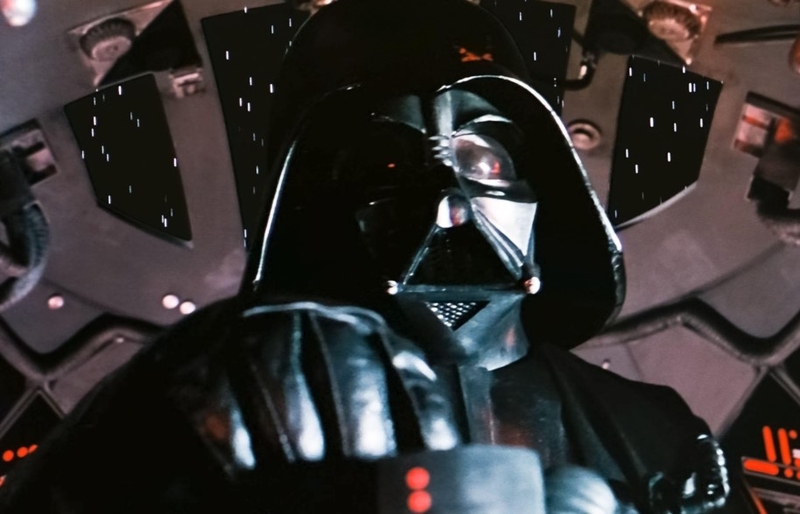
At the time, sequels weren't in high regard, so many crew members lobbied for the TIE's destruction. In the end, Lucas called the shots and made sure the scene stayed. Had Vader not survived in the first movie, anything that followed could have looked immensely different.
The Sandcrawler Almost Started a War
The Sandcrawler for "A New Hope" was massive, built to size, which was two stories high, and over 90 feet in length when constructed. Taking into account the time and effort that was required to put the Sandcrawler together, its building piqued the Libyan government's interest.
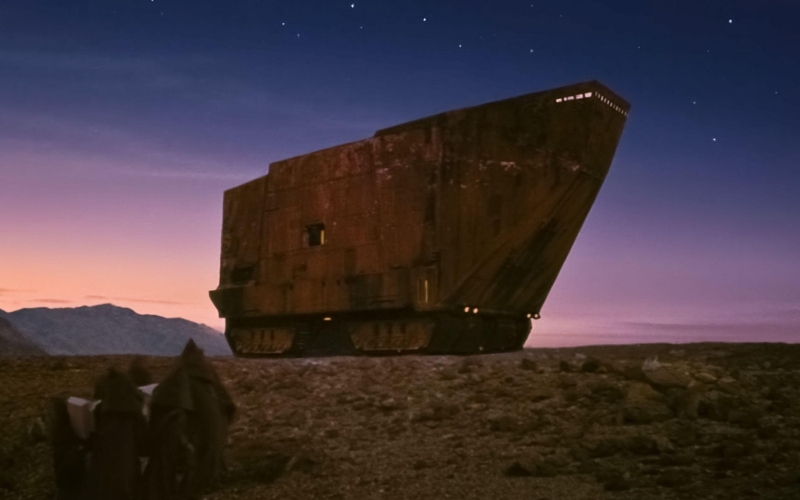
Investigators from across the border were sent to determine whether it was a new type of military vehicle. But the investigators soon realized they were looking at a movie set under construction, so they left Lucas and his crew alone.
James Earl Jones Wasn't Credited by Request
James Earl Jones' celebrated career is filled with memorable roles, but one of the roles he was most well-known for was providing Darth Vader's voice. David Prowse originally delivered all the dialogue, but his British West Country accent just didn't feel right for George Lucas, and in the end, he dubbed over Prowse's dialogue.
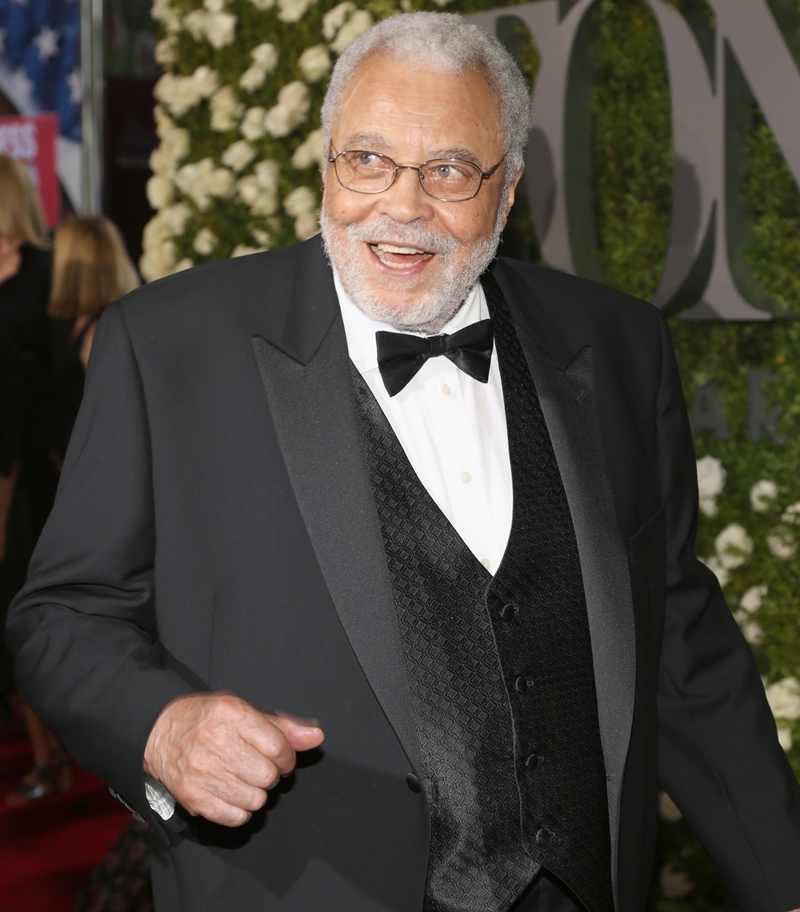
However, Jones asked that he not be given credit for his work in the film's credit reel, as he felt that his contribution to the film was insignificant, and he didn't deserve any credit. Over time, he discerned the importance his voice gave to the character and reprised the role in subsequent movies, TV series, and video games.
Nien Numb Spoke Kikuyu
Nien Numb was Lando Calrissian's co-pilot during the second Death Star siege in "Return of the Jedi." Many people assumed Nien Numb spoke in a dialect as something he made up for the film. But all of Nien Numb's dialogue in the movie was from a real language!
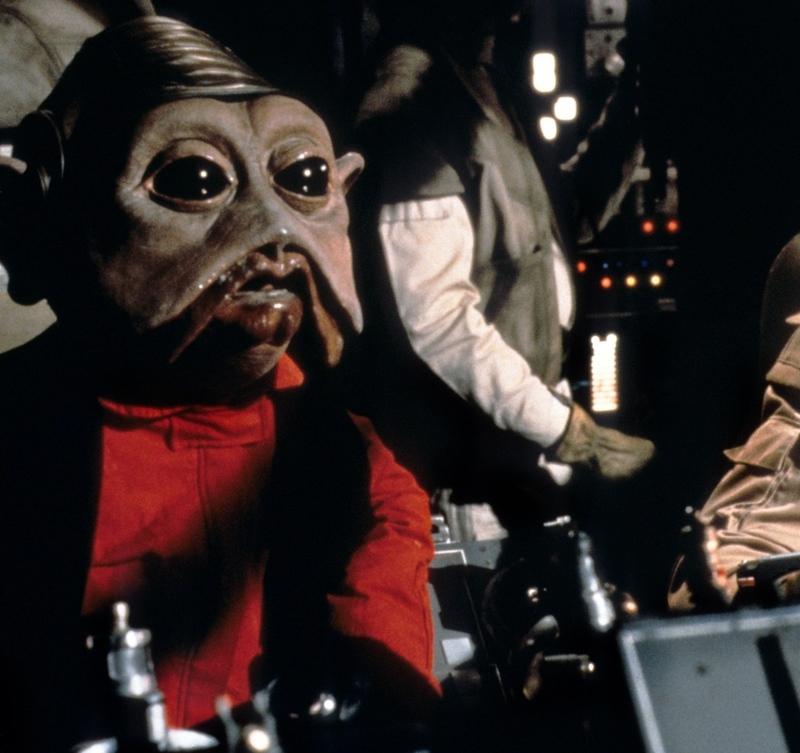
He was speaking Kikuyu, the dialect of Kenya's majority tribe. So when he said, "Atirizi inyui mwi hau inyouthe ukai haha," viewers throughout Kenya chuckled at what translated into, "What are you doing over there? All of you, please come here."
Han Solo's Freezing in Carbonite
"The Empire Strikes Back" probably has one of the most depressing endings of any movie. Han Solo is frozen in carbonite, and Luke loses his hand, and he finds out Darth Vader is his father. Han might not have been frozen in the first place if Harrison Ford had approved to return in the sequel.
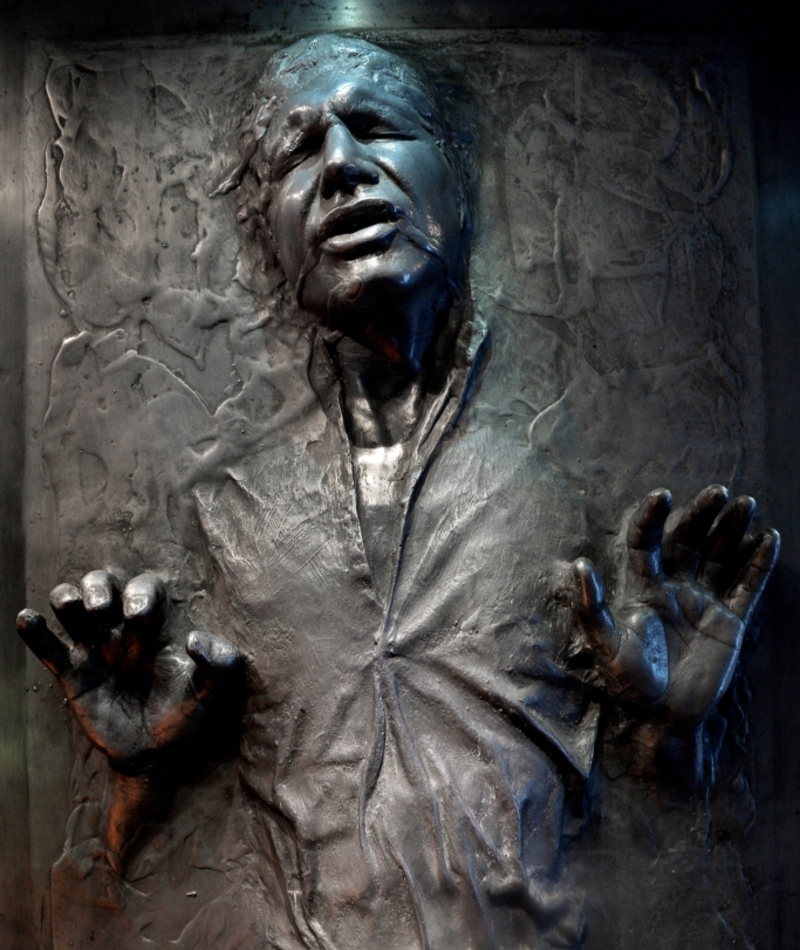
That's at least a part of why he was put on ice because Ford was the only one of the principal actors who refused to sign a three-picture deal from the beginning. Carrie Fisher and Mark Hamill had both done that when they joined in "A New Hope," but Ford wasn't as committed as they were.
The 'Return of the Jedi' Crew Didn't Like Admiral Ackbar's Look
Admiral Ackbar is arguably the most unattractive member of the Rebel Alliance. As a member of the Mon Calamari people, he resembles an anthropomorphic squid, and apparently, the "Return of the Jedi" crew was keen to upgrade his look.
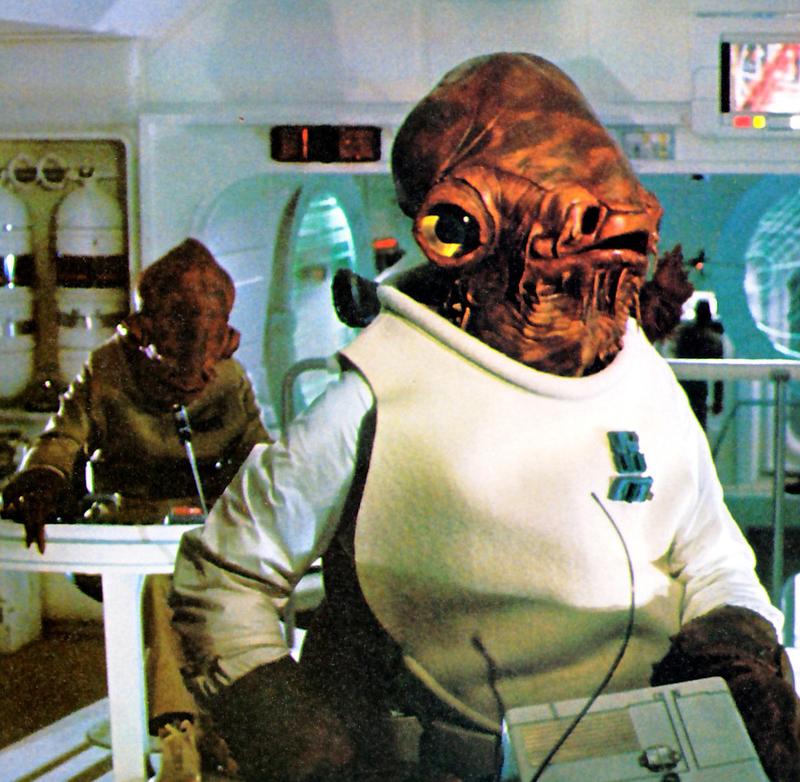
Director Richard Marquand refused to alter Ackbar's look, saying, "I think it's important to make a point of good people not being good-looking, and that bad people aren't necessarily ugly people."
James Earl Jones Didn't Believe Darth Vader Was Luke's Father
The story of Luke Skywalker's parentage is one of the most powerful in the Skywalker Saga, but few people actually knew it before "The Empire Strikes Back." Even on the set, nobody was aware of what would happen, and because Vader's lines were dubbed, they didn't need to know.
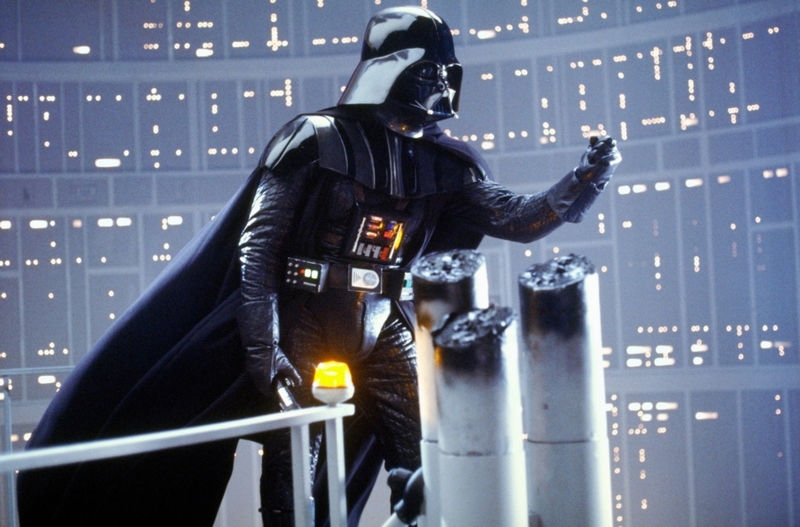
When the script arrived on James Earl Jones's desk, the actor said, he didn't believe it: "I said, 'He's lying. I wonder how they are going to work that lie out?'"
'Star Wars' Was the First Movie Dubbed in Navajo
Now there are some people who are familiar with the Code from WWII. If not, you should know that the Navajo language is spoken by so few people that it was used to encode Allied messages during the war. Fast-forward to a few decades later and the language was dubbed over the dialogue of Star Wars, making it the first feature film to do so.
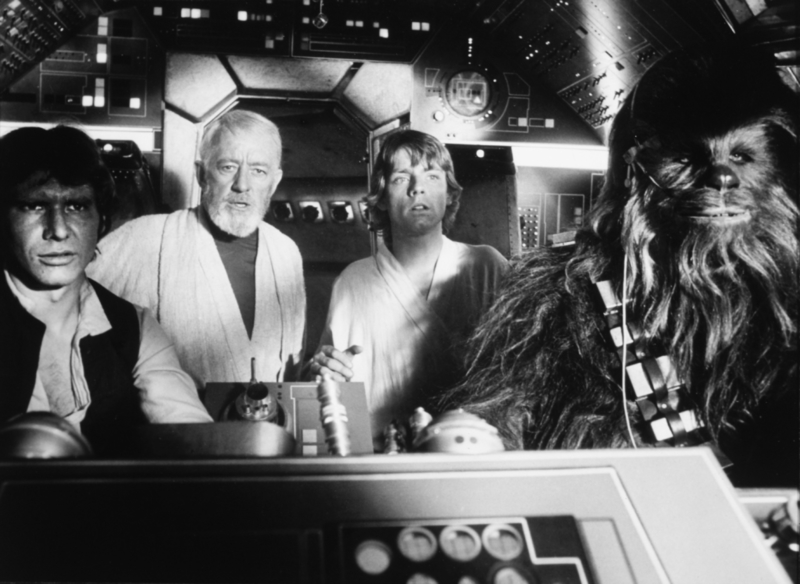
The dubbing wasn't initially done when the movie was released. It was only in 2013 that the Navajo Nation Museum worked together with Lucasfilm to translate and dub "Star Wars Episode IV: A New Hope."
The First of Its Kind
"Star Wars" has since been translated into over 50 different languages! Not only was it the first major feature film to be translated into Navajo, but it was also the first film translated into a Native American language. The goal was to help keep the language alive, as the Navajo Nation Museum director, Manuelito Wheeler, described: "This was an idea that I felt was a way to promote our culture, our language, and as a way to save our language."
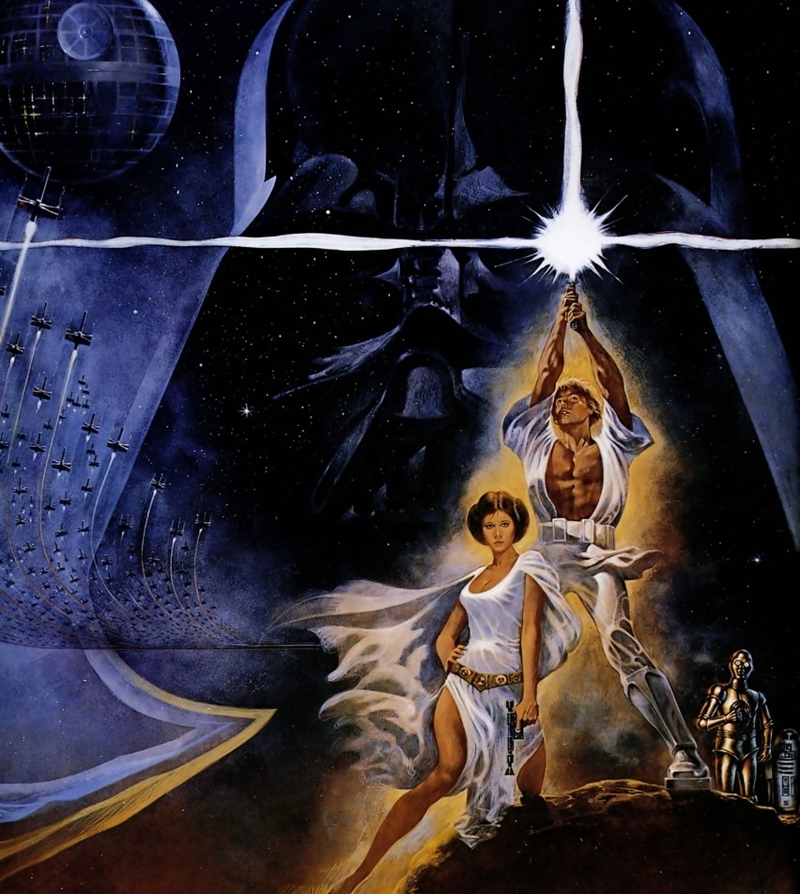
Star Wars nerds out there can recite the movie verbatim without knowing any Navajo. And so when they're viewing this in Navajo, they're learning a new language.
Harrison Ford Only Made $10,000 in the Original Film
Back in 1977, Harrison Ford was paid only $10,000 for his role as Han Solo. Regarding inflation, $10,000 in 1977 was only worth about $42,890 in 2020, so that's not a huge paycheck for someone starring in a feature film. Ford did manage to snag .5% of ticket sales, which made him an impressive $1,948,495 on top of his $1,000 per week salary, which isn't so shabby.
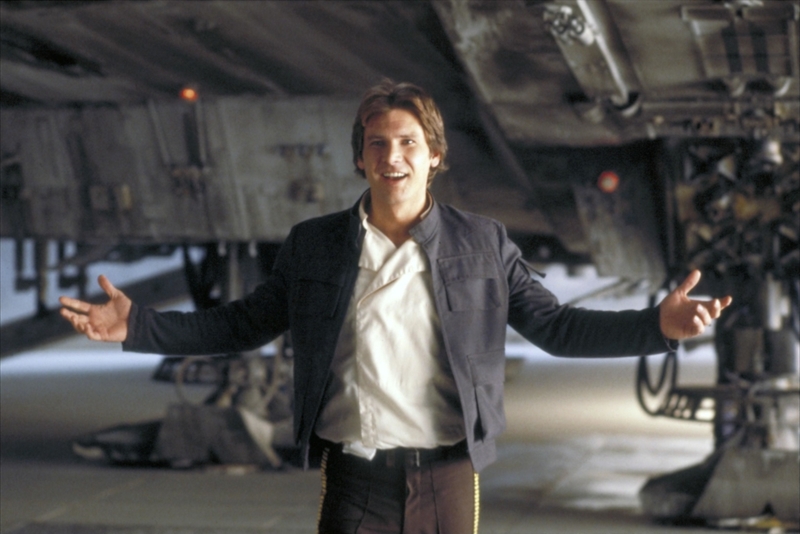
He did much better in the next two films, earning $100,000 for "The Empire Strikes Back" and $500,000 for "Return of the Jedi." When he returned to the franchise in 2015's "The Force Awakens," Ford pulled in an impressive $20 million payday.
Ewoks Makes Sense... If They Slow Down
The Ewoks' language seems to be an arbitrary mixture of unmatched syllables, but it wasn't exactly entirely made up. Their peculiar speech was the creation of sound designer Ben Burtt, who strung together Tibetan phrases along with Nepalese words.
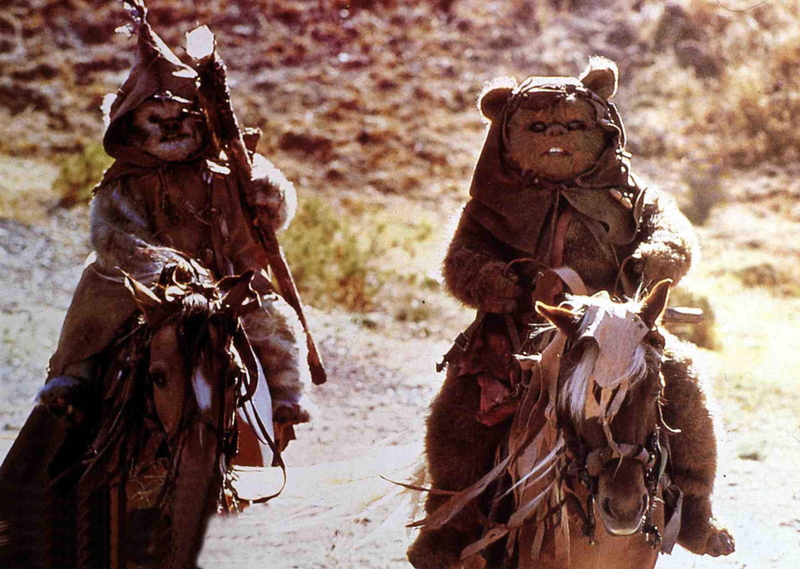
What they're saying is real, only it's sped up, with some phrases said backward.
George Lucas Was Fined for the Opening Credits in 'The Empire Strikes Back'
Often before the action begins in movies, audiences see the credits for the main actors, director, screenwriters, and producers, but it wasn't always like this. According to the Directors Guild of America rules, a film can skip those opening credits, but if one person gets a credit before the film starts, the director must also get a credit.
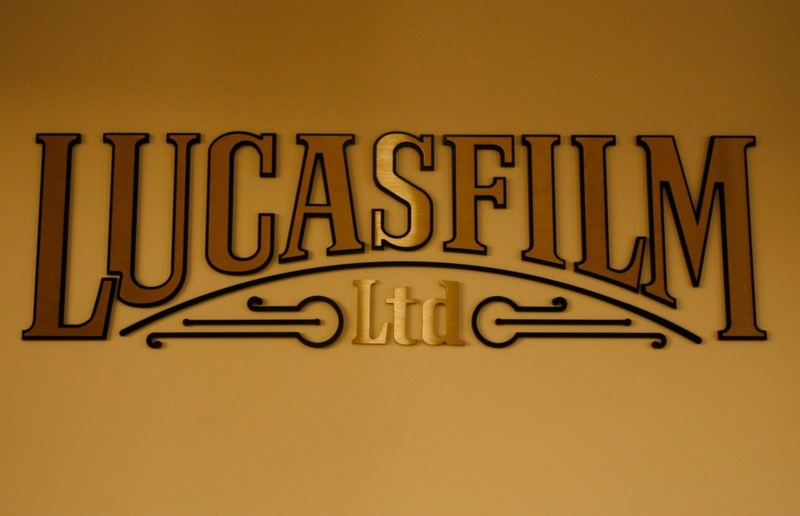
For "The Empire Strikes Back," Irvin Kershner was the director, and George Lucas was the producer, and his name was only in the opening credits as part of the "Lucasfilm Limited" logo. Consequently, Lucas was fined $250,000, with Kershner being fined $25,000 for this transgression. Lucas has since left the Director's Guild because of this matter, with no intention to return.
Filming the First Two Movies Was Impeded by Bad Weather
It's not unusual for the weather to disturb a movie set, but while shooting "A New Hope" in Tunisia, an unexpected downpour - the first major rainstorm in 50 years - hampered their filming. Fast-forward a few years, when filming began for "The Empire Strikes Back" in Norway, and the area received the worst winter storm in over half a century.
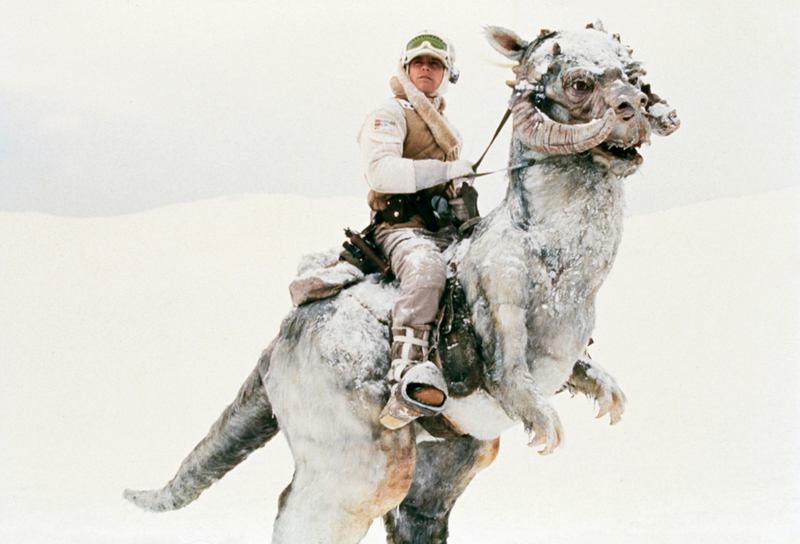
Temperatures dropped to minus 29 degrees Fahrenheit, and a whopping 18 feet of snow fell, which caused many predicaments. On one occasion, crew members couldn't even leave their hotel due to snow piled up against the doors.
The Original Film Wasn't Named "A New Hope" Until 1981
When fans look back, they know that the film released in 1977 was "Star Wars: Episode IV - A New Hope," but that's not what it was called back then. It was originally termed "Star Wars," which everyone called it for several years. It wasn't until the film's third re-release in 1981 that it got a title change to "Star Wars: A New Hope." That change has since been applied to all the films in the Skywalker Saga.
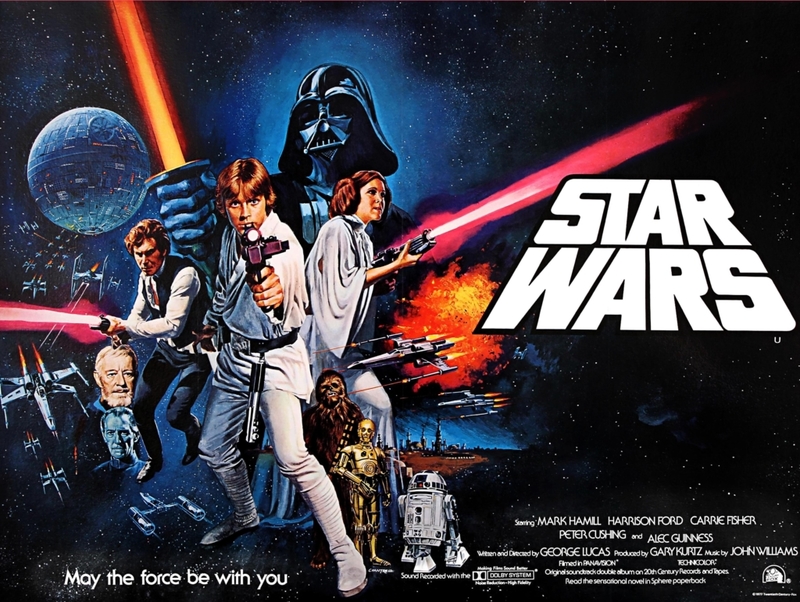
The film originally ran from May 25, 1977, to July 20, 1978. Fans were outraged when it was removed from theaters, but 20th Century Fox brought it back the next day. This was, after all, at a time when video sales and rentals were nonexistent, so fans demanding to see it over and over again in theaters wasn't surprising.
Even Darth Vader's Voice Actor Didn't Know What His Infamous Line Meant
Details of "Star Wars" scripts have always been kept very hush-hush, which was probably never more important than during the production of "The Empire Strikes Back." The movie's revelation that Darth Vader is Luke Skywalker's father was one of the biggest twists ever revealed in cinema history. David Prowse did all the Darth Vader dialogue that was later dubbed over by James Earl Jones, but even he didn't know the real truth of what Vader was saying to Luke in that famous scene.
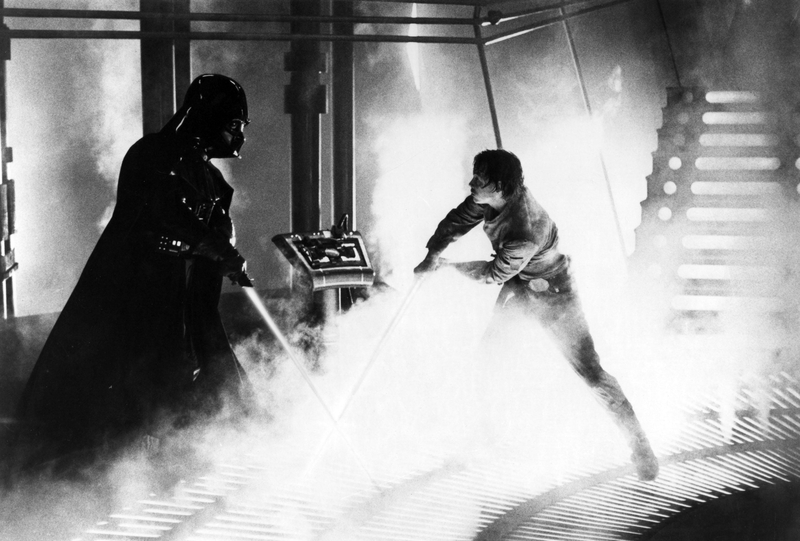
Prowse said the line in the script was, "Obi-Wan killed your father." Luke reacted the way he reacted, and that was the scene. Of course, when the movie finally made it to theaters with Jones' dub, the truth was revealed, and Vader said the now-famous line, "No. I am your father."
Han Solo's Greatest Line Was Kind of Improvised
There is a scene in "The Empire Strikes Back," where Han Solo is lowered into the chamber to freeze him in carbonite; Princess Leia then professes her love to him, and he simply replies, "I know." One story says that Harrison Ford improvised those words because he didn't feel his character would be emotional.
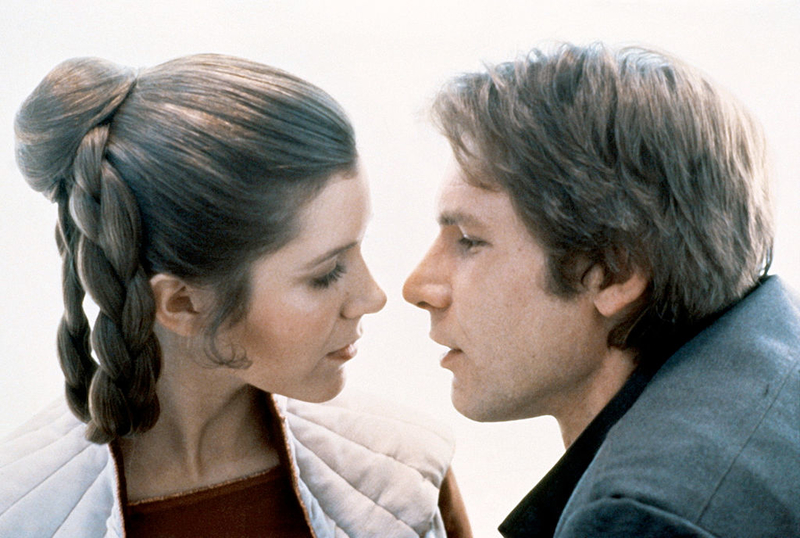
The truth is that Ford discussed his line with director Irvin Kershner. Originally, Leia was supposed to say, "I love you. I couldn't tell you before, but it's true." Han was supposed to respond, "Just remember that, 'cause I'll be back." Ford suggested the changes that eventually made it into the movie's final cut.
When Leia and Han Arrive in Cloud City
It was a terribly sad day when Carrie Fisher passed away on December 27, 2016. This was after filming her scenes for 2017's "The Last Jedi." Fisher was known for living life to the fullest and revealed in her autobiographies how she liked to party while on set, so it's not surprising to learn that she had stayed up many nights with crew members while shooting "The Empire Strikes Back."
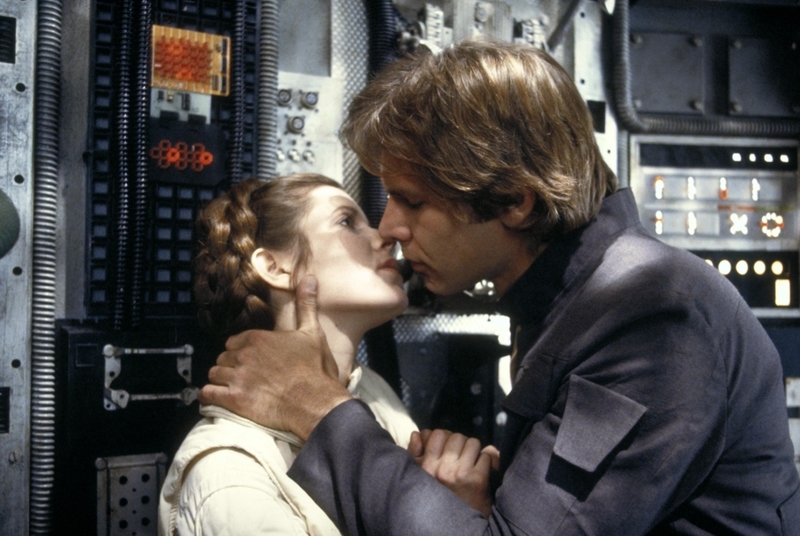
Fisher and Harrison Ford were both tired from the night before when they filmed the scene where Han Solo and Princess Leia arrive at Cloud City. The two actors were reportedly up until well into the morning. Eric Idle from 'The Rolling Stones' confirmed their eventful night in an interview, saying that Carrie Fisher had rented his house and stayed there.
Did It Really Happen 'A Long Time Ago?'
Every movie in the Star Wars saga opens with the famous line, "A long time ago in a galaxy far, far away," which sets the story in a far-off place, but there's a little more to it than that.
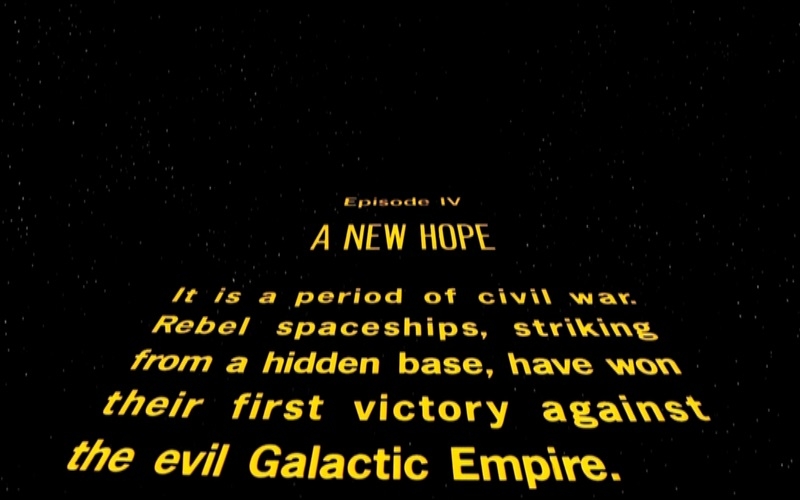
According to a book titled "How Star Wars Conquered the Universe," written by Chris Taylor. The tale of Star Wars is actually being recited to the keeper of the Journal of the Whills, a century after the events by R2-D2. The Journal of the Whills is mentioned in the novelized version of "The Force Awakens."
Carrie Fisher's White Dress
Carrie Fisher once toured the country doing a one-woman show; she spoke about being instructed not to wear anything underneath her white dress in "A New Hope." George Lucas attended a performance in San Francisco and afterward explained to Fisher why.
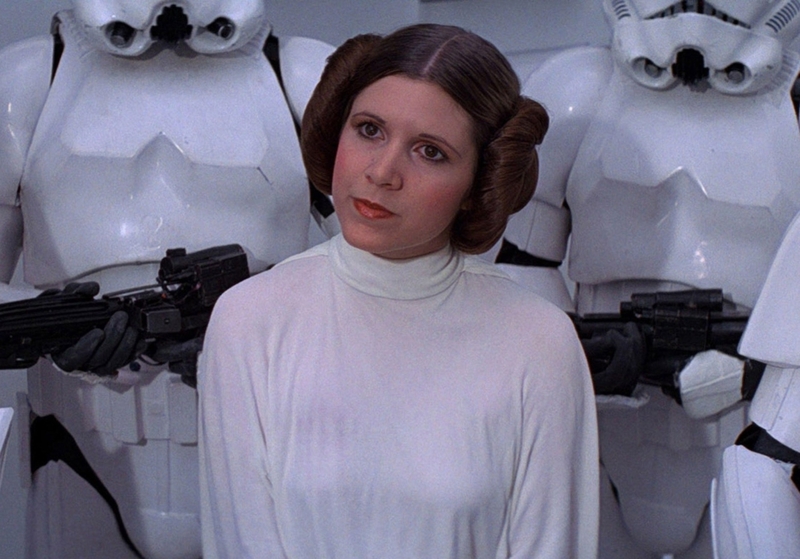
Lucas explained that there was no underwear in space, stating that in space, you become weightless, and so your body expands. But your clothes don't, so you don't want to get strangled by your undergarments. That's why Carrie says she couldn't wear a bra in the first "Star Wars."
Wardrobe Department
As for the rest of the cast members' wardrobe, it was just as minimal. To save money, all the pants worn in the first movie were just Levi blue jeans bleached out, with the back pockets removed.
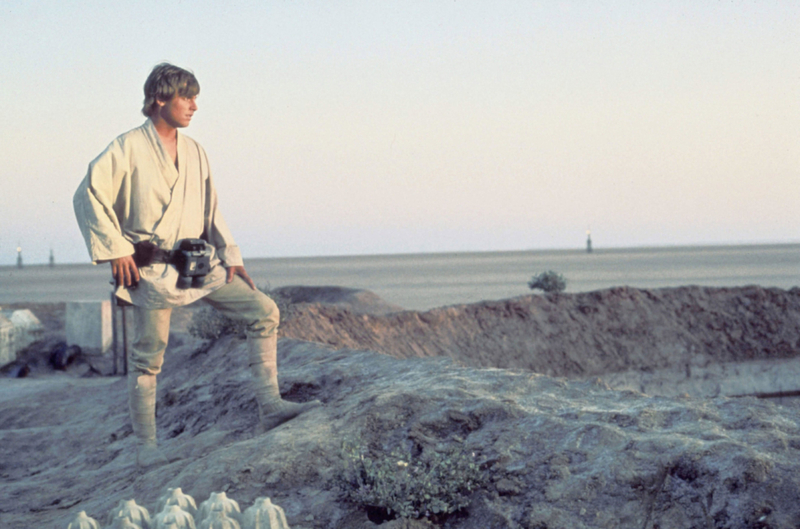
George Lucas even called Star Wars the most costly low-budget film ever made. This revelation makes us rethink our future Halloween costumes, which we should be DIYing with bleached jeans for a more authentic look!
'Return of the Jedi' Almost Had a Different Ending
In the final scene of Lucas' "Return of the Jedi," the shield generator, the Death Star, and the Emperor all disappear. The Ewoks throw a pleasant party where they sing, and everyone is happy (until the release of the Special Edition, of course). But it almost didn't go that way; according to producer Gary Kurtz, the ending they initially had in mind was much darker.
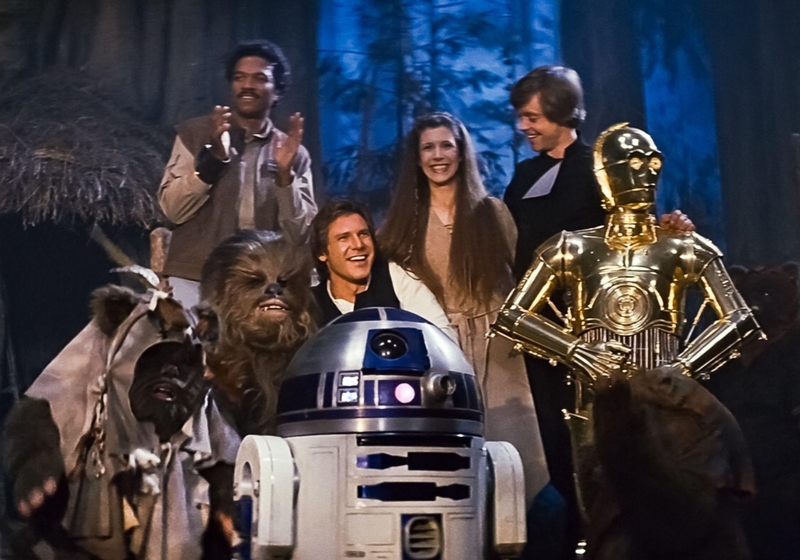
In one draft of the script, Han Solo was meant to die during the assault on the shield generator, but apparently, George Lucas nixed the idea. Luke was supposed to be disturbed to the point of disappearing off on his own. Granted, he eventually does that, but back in 1983, that was far off into the future.
'Blue Harvest' Was the Code Name for 'Return of the Jedi'
While filming the "Return of the Jedi," the crew operated under the guise of filming a horror movie called 'Blue Harvest' to keep the paparazzi at bay. The title was chosen in honor of the 1929 novel "Red Harvest," which inspired Akira Kurosawa to film "Yojimbo."
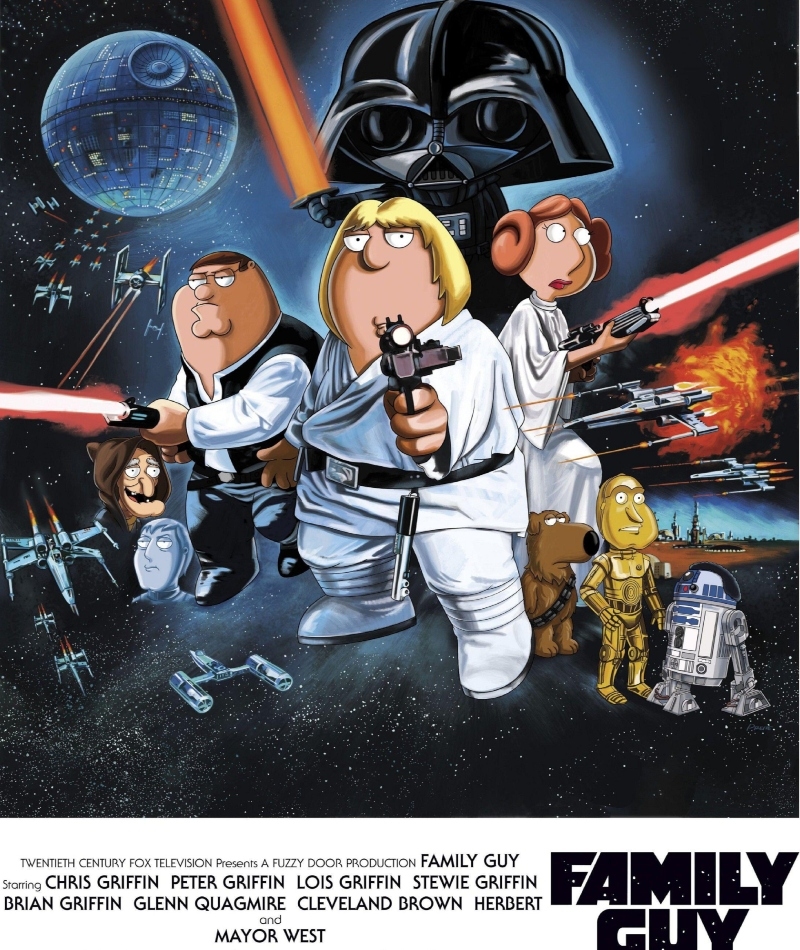
"Red Harvest" was later used as the title of a Star Wars tie-in novel, and "Blue Harvest" was the title of an animated Ewoks episode. Many years later, "Family Guy" issued an episode titled "Blue Harvest" that was a spoof of "Return of the Jedi." Producers did receive permission from Lucasfilm to film the episode.
The Speeder Chase Scene in 'Return of the Jedi'
In "Return of the Jedi," to make the speeders appear to travel through the forest at a much more speedy pace or more like a supersonic speed, cameraman Garrett Brown walked through the forest, filming at a slow pace of 3/4 frame per second.
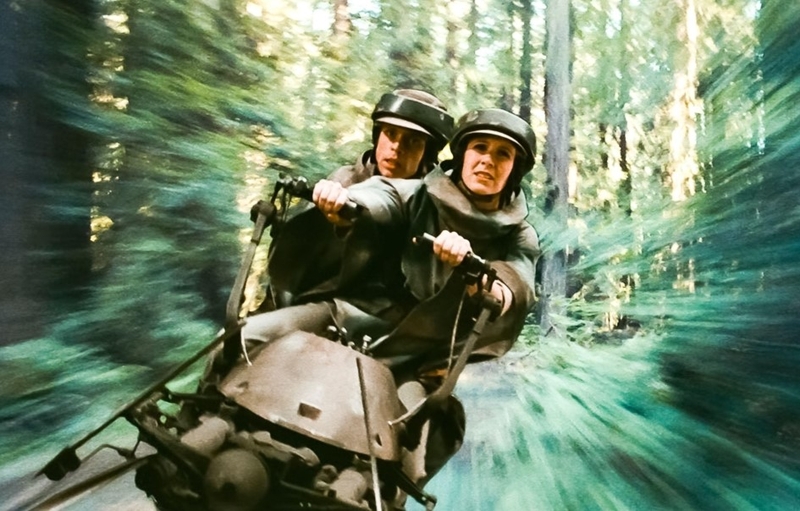
However, the final footage was pieced together at the usual rate of 24 frames per second, making the racer appear to move much faster at around 120 mph. Garrett Brown described the process: At a camera speed of only 3/4 frame per second, a thousand feet of precise walking gets you just 16 feet of VistaVision in the can.
The 'Empire Strikes Back' Premiere
Back in early 1980, when "The Empire Strikes Back" first premiered, it was prefaced by a short film called "Black Angel" in European and Australian cinemas. Millions of viewers saw the short, directed by Star Wars art director Roger Christian, but it was misplaced after the movie left theaters.
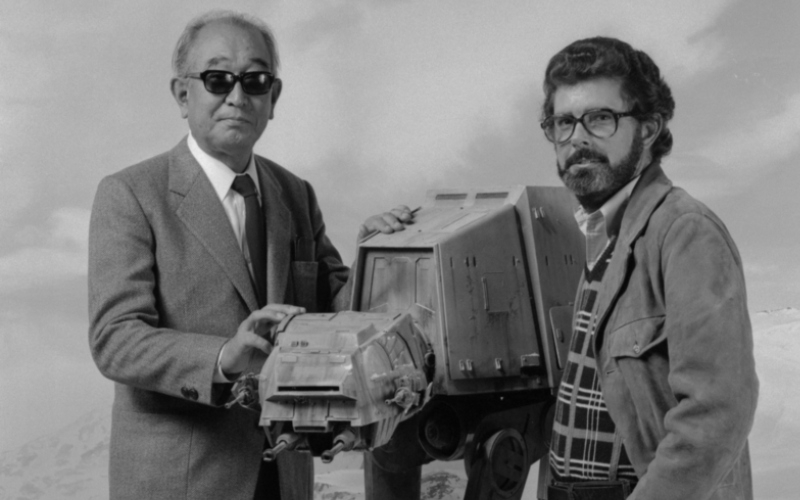
George Lucas funded the 25-minute dark fantasy movie as a gift to Christian, but even Christian didn't know where to find a copy until 2011. More than 30 years after it was released, "Black Angel" resurfaced, and Christian restored it with the help of the Bay Area Visual Effects Society and Skywalker Sound.
The Endorians Weren't Mentioned Once in 'Return of the Jedi'
The furry and adorable inhabitants of the forest moon of Endor are well-known as Ewoks, but if you were to rewatch "Return of the Jedi," you'll notice they aren't called that at any time in the movie. Their name was only revealed in the movies' credits and toy sales.
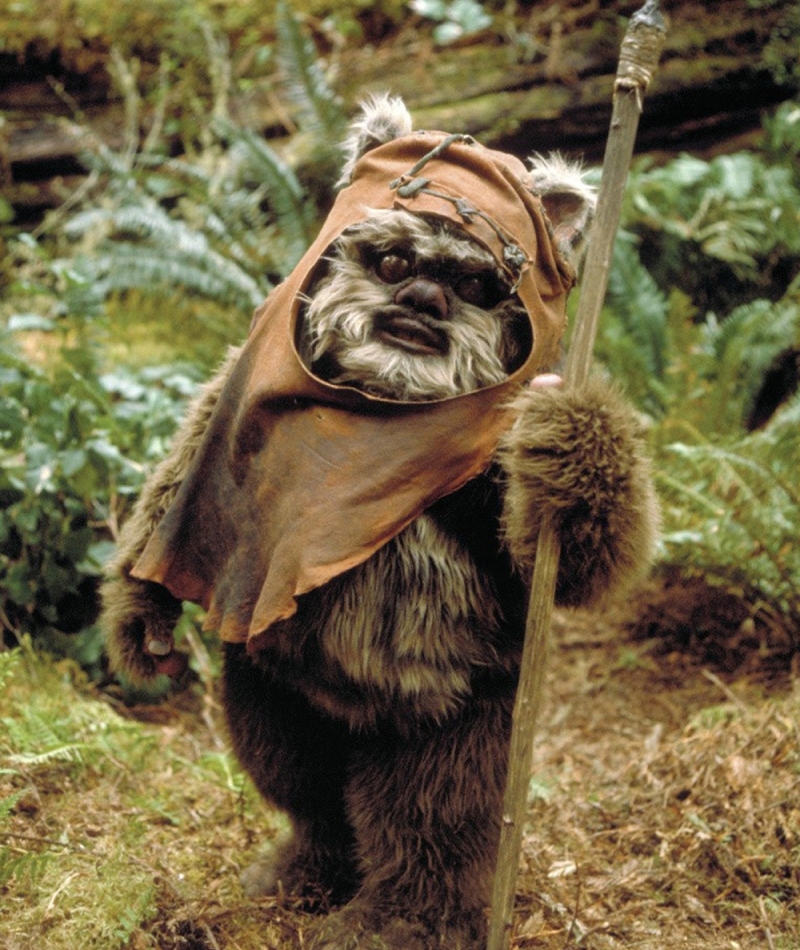
The Miwok Native American tribe inspired their name, with scenes from the forest moon of Endor were recorded in California's Redwood National Forest.
Blue Milk?
That Blue Milk so prevalent at the Cantina on screen in Star Wars wasn’t exactly the actors' drink of choice. According to Hamill, the blue milk was really “long life” milk, mostly used by campers as it doesn’t need to be refrigerated. A little blue food coloring was added to make it that bright color.

As for the taste? “It was rich, warm, and slightly sweet, it made me want to hurl, but I was determined to drink it on camera,” said Hamill. “It was a challenge to look as if I was enjoying it.”
Harrison Ford Was Cast by Accident
George Lucas had his friend and fellow director Brian De Palma join him for the seven-month-long casting sessions for Star Wars, who was casting for Carrie at the same time. Lucas was on the lookout for unfamiliar faces that he had never worked with before and, initially, brought in Harrison Ford —to feed lines to the auditioning performers.
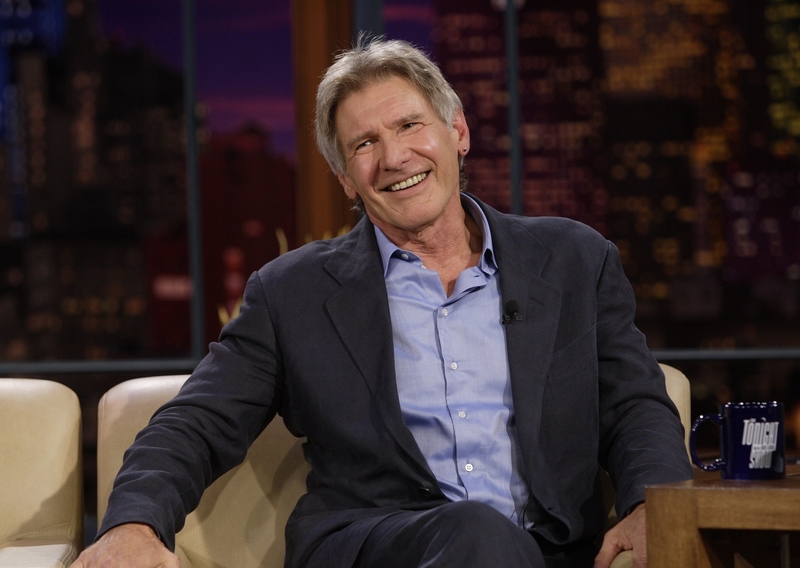
Harrison Ford had appeared as Bob Falfa in Lucas’s American Graffiti. Lucas examined dozens of actors—including a young Kurt Russell—for the part of Han but liked Ford’s delivery the most when he was feeding lines to the other actors, so he cast him in the end.
Unfortunate Feuds
R2-D2 and C-3PO may have been best buds on-screen, but the actors who played the droids despised each other off-camera. Kenny Baker, the actor who played R2-D2, referred to Anthony Daniels (C-3PO) as unpleasant and rude. “Anthony doesn’t like to mix at all—he only keeps to himself,” Baker said in an interview.
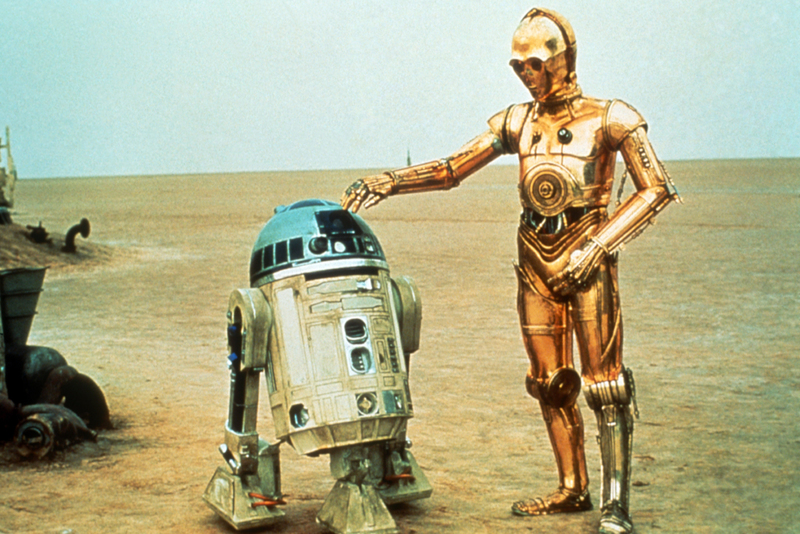
“He never wanted to have a drink with any of us. I once said hello to him, and he just turned his back to me and said, ‘Can’t you see I’m busy?’ I was burning with anger. It was one of the most insulting things anyone had ever done to me. I was infuriated. It was quite staggering to me.”
Don’t Upset Yoda
Ever since Yoda made his "Star Wars" appearance in the 1980's "Empire Strikes Back," his rather specific way of speaking left quite the impression on fans and pop culture enthusiasts worldwide. Even his castmates began to imitate the little guy. But Frank Oz, who voiced Yoda, was not too pleased when he would have to constantly hear their Yoda impressions.
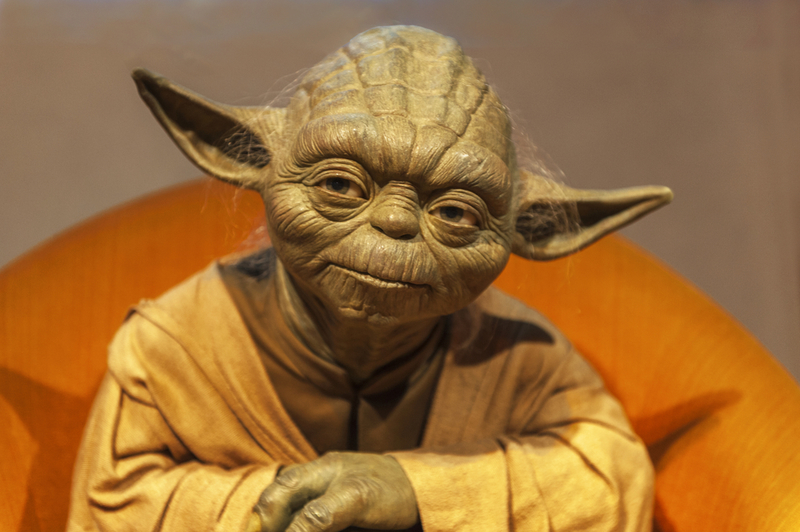
Everyone was making Yoda impressions ("Hungry are you? To lunch we must go!"), He eventually begged them to stop because their goofy expressions were distracting him from his lines.
A Real Stinker
The garbage in the Death Star waste compactor scene in "A New Hope" was actually real. The stench was so gross that Mark Hamill burst a blood vessel from holding his breath for too long, and the camera angle had to be modified for the rest of the scene to hide his injury.
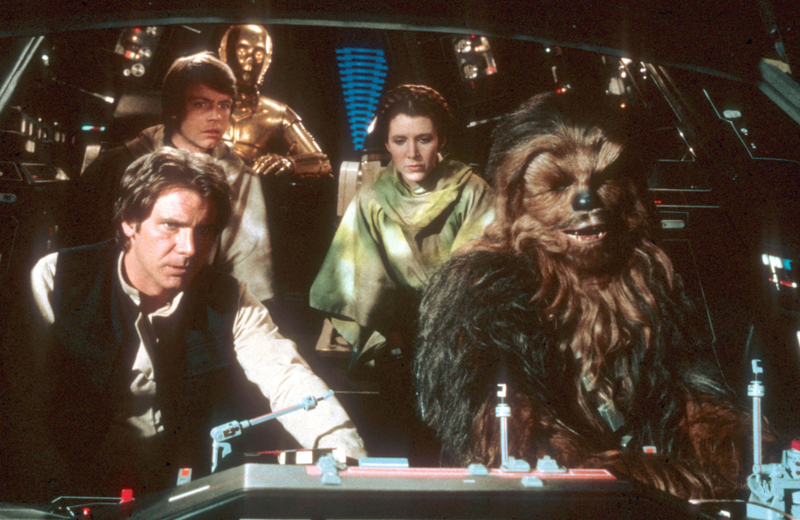
As for Peter Mayhew's yak-hair Chewbacca suit? It smelled for the rest of the production. Here's a bonus Star Wars fun fact: At the start of "A New Hope," Chewbacca was 200 years old.
An Expensive Puppet
The puppet for Jabba the Hutt cost $500,000, and there were three puppeteers inside: one had to control the right arm and jaw, another handled the left hand and jaw, tongue, as well as head movements, and both of them moved the body; a third person controlled the tail.
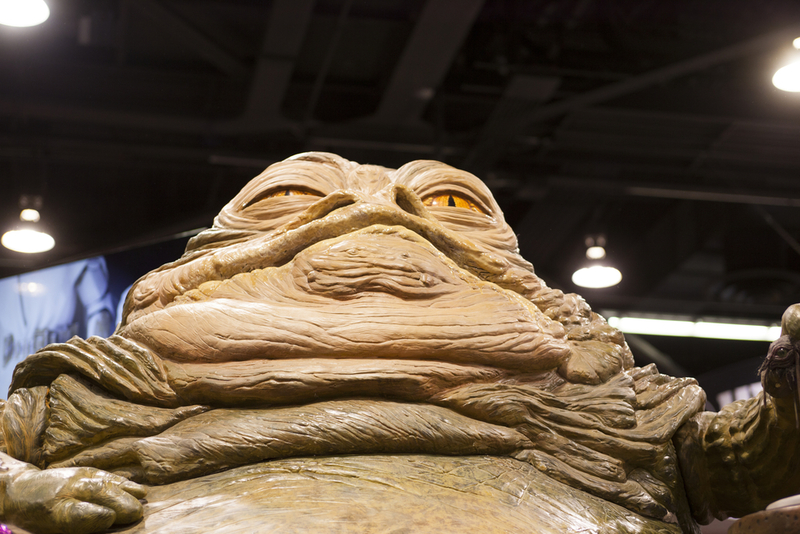
Outside the model, there were two people on radio controllers for his eyes, someone else was under the stage to blow smoke through a tube, and another was working bellows for the lungs." Now that sounds like a lot of effort!
Classic Rock
The final victory ballad sung by the Ewoks at the end of Jedi was written by the same artist who wrote “Africa.” Joseph Williams, many know him as the lead singer of Toto, and he is also the son of the legendary composer John Williams.
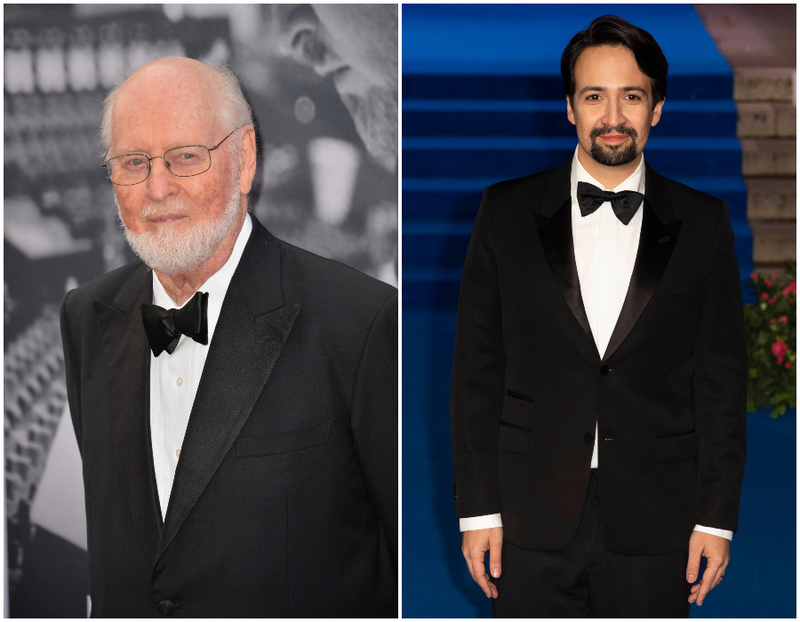
We guess it rains down in Eeeendoooooor… Fun fact: In other music news, the new Cantina music featured in "The Force Awakens" was written by Lin-Manuel Miranda—the creator and first star of current Broadway smash hit "Hamilton."
A Strong Female Lead… Almost
In January 1975, George Lucas worked on the second draft of his epic sci-fi space opera; there were many problems with this hefty script that would eventually become "Star Wars: A New Hope." One problem that seemed easy to solve to Lucas was the pressing lack of female characters.
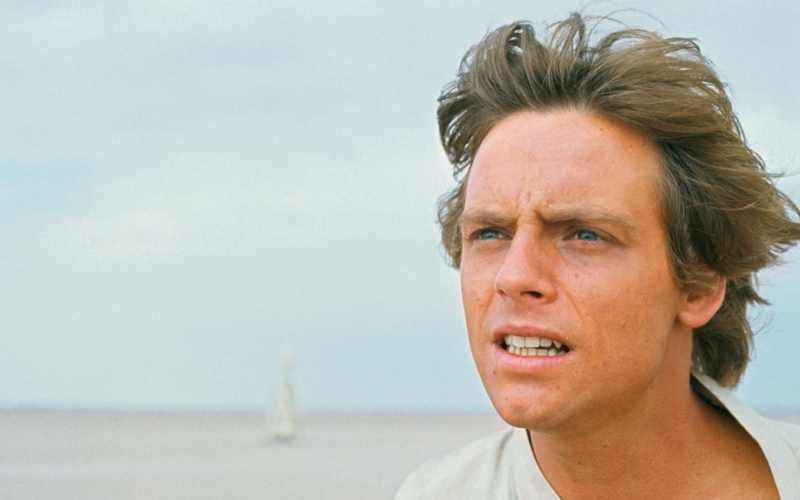
So, Lucas did something drastic, he rewrote his story's main character, Luke Starkiller, as an 18-year-old girl, but with his next draft a few months later, Starkiller was a boy again. It took 40 years for Star Wars to finally get a female lead.
Based on a True Story
In 1977, Hamill was injured in a car crash and needed facial reconstruction surgery, so Lucas prepared to incorporate a scene of Luke's face in "The Empire Strikes Back" to work with Hamill’s injury in an effect.
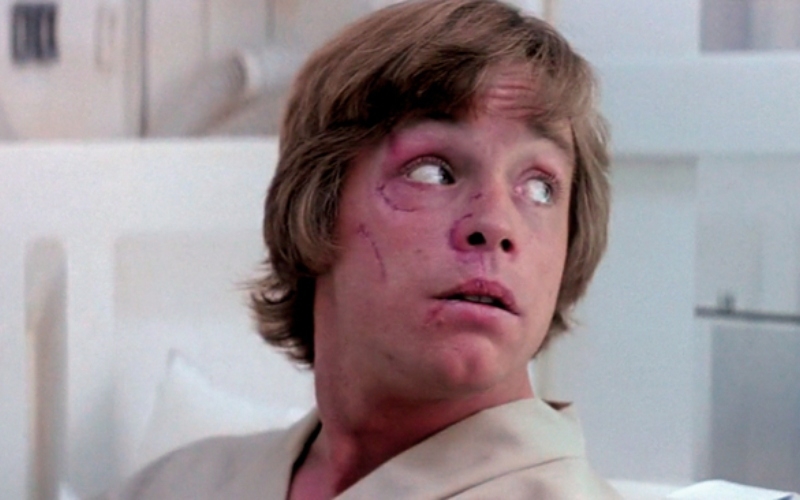
In the scene, they filmed a droid is treating Luke’s face, but it was eventually cut from the final movie.
Easiest Audition Ever
When they were hosting auditions for Chewbacca early on, an incredibly tall, almost giant man named Peter Mayhew was in line for the role. Peter was cast just 10 seconds after meeting Lucas in his role as Chewbacca.
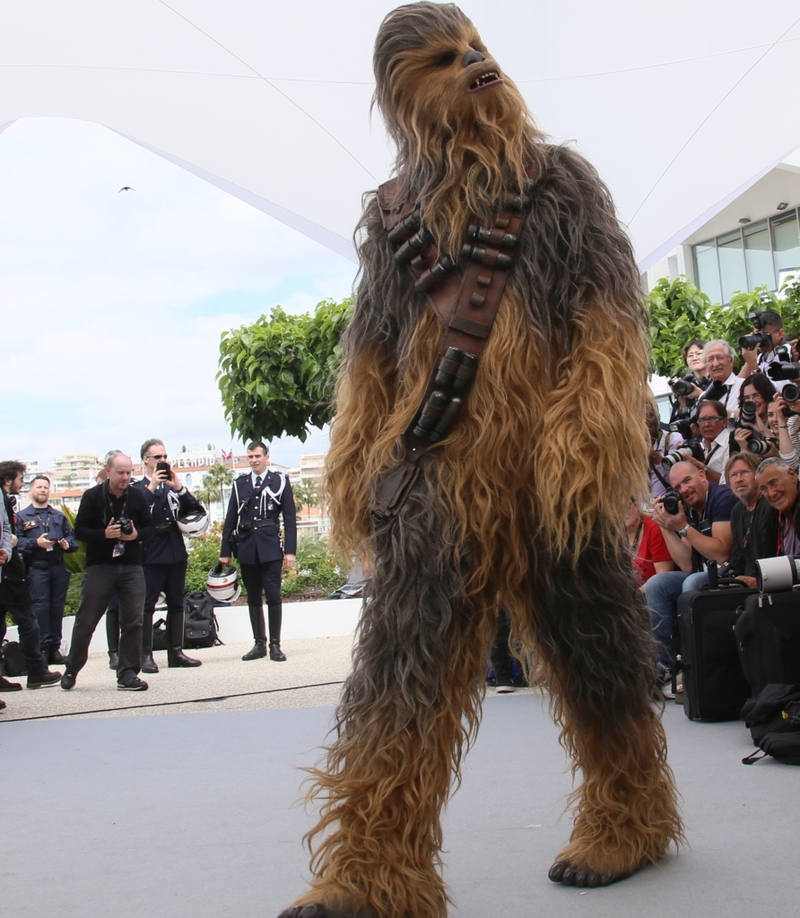
When he stood up, Mayhew was 7’2”, and his height proved perfect for the role of our beloved furry favorite.
The Original Millenium Falcon
The Millennium Falcon's original model was cylindrical and long—quite different from the flat design we are familiar with now. The model creators complained the design was almost like the spacecraft from the 1970s British TV series "Space: 1999."
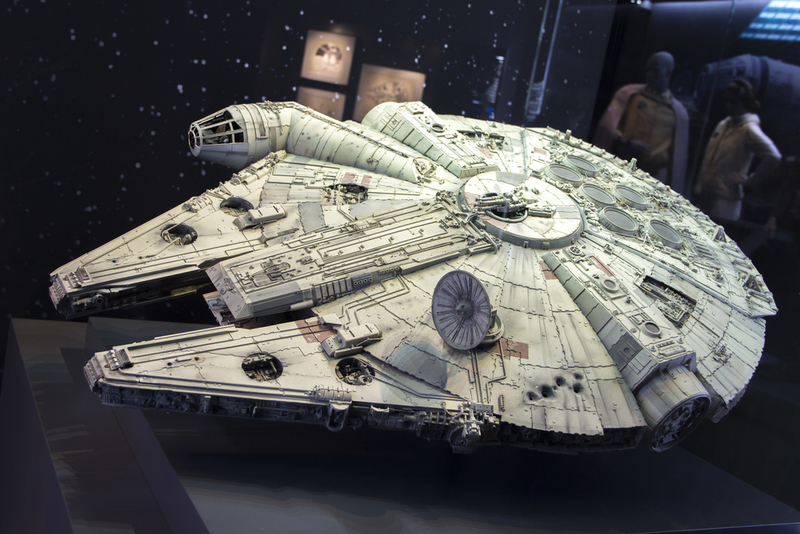
Consequently, Lucas told them to create something completely different. A modification of the Falcon prototype did, however, end up in the movie. It's the Rebel Blockade Runner seen escaping the Imperial Star Destroyer in the opening scene.
Theaters Didn't Want to Show the Movie
After the movie was released just before Memorial Day, less than 40 theaters agreed to show "Star Wars." Around that time, 20th Century Fox was going to release an eagerly anticipated movie called "The Other Side of Midnight," with theaters eager to show.

Fox then stipulated that any theater showing "The Other Side of Midnight" must also show "Star Wars," which inflated the movie's number of screens. Soon enough, "Star Wars" became the highest-grossing movie ever made up to that time, while "The Other Side of Midnight" didn't even break the $25 million mark.
Buffy?
In the script's initial drafts, Yoda was named "Buffy," which was ultimately changed in future drafts to the full name "Minch Yoda," and then it was shortened to Yoda. Designer Stuart Freeborn created the eventual puppet for Yoda in a week with guidance from "The Muppets" creator Jim Henson.
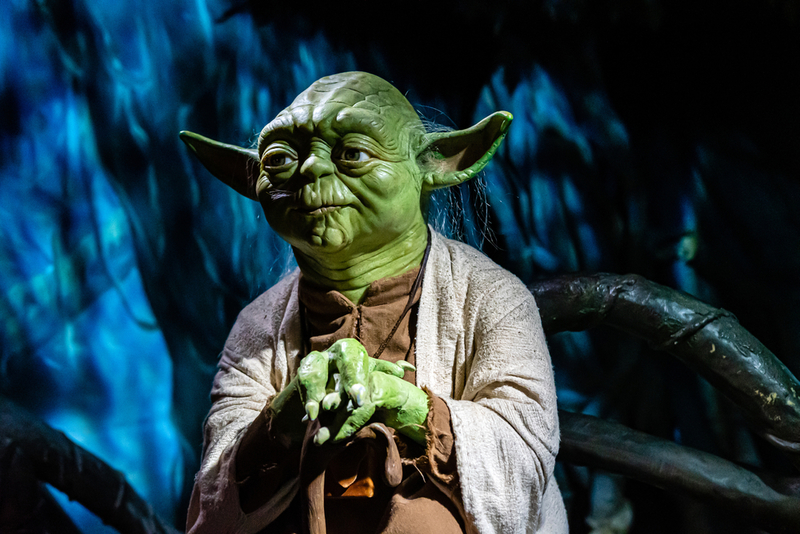
Henson then vouched for Frank Oz as Yoda's main puppeteer. Freeborn modeled Yoda's eyes after Albert Einstein to give the little green Jedi the look of a wise Jedi.
Alec Guinness Didn't Want to Be in Star Wars
Sir Alec had a touchy history when it came to his role in Star Wars. He once described the movie as "fairy-tale rubbish" and didn't want to appear in "The Empire Strikes Back." Lucas eventually persuaded Guinness to appear as the ghostly version of Obi-Wan with Yoda on Dagobah.
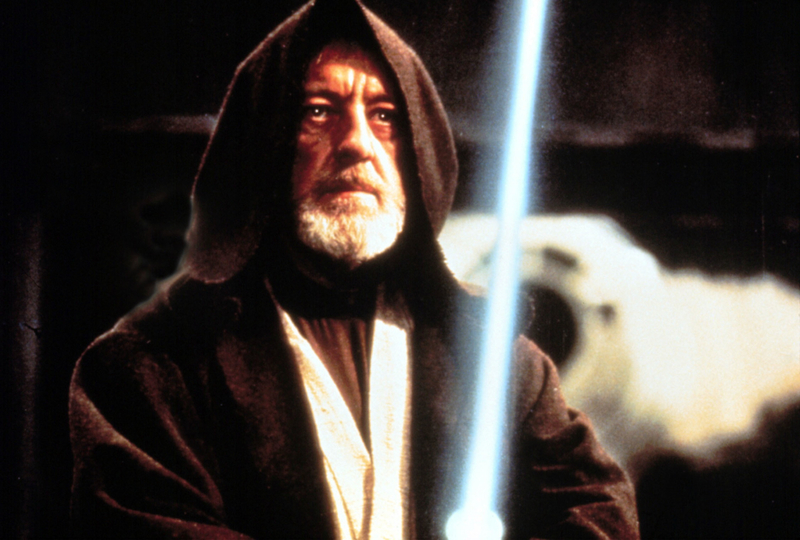
Still, he would only do it under very strict working conditions: His one workday would start at 8:30 a.m. and promptly end at 1 p.m., and he demanded to be paid one-fourth of a percent of the film's total gross. That meant for his 4.5 hours' worth of work, he netted millions!
There Were Many Big Names on the Shortlist
Steven Spielberg was Lucas's premier choice to direct the third chapter of the series. However, Spielberg was forced to decline Lucas's request after leaving the Directors Guild, of which Spielberg was a principal member. David Lynch and David Cronenberg were still relative newcomers whom Lucas also considered to direct. Lynch had just had commercial success with his movie "The Elephant Man," but he turned Lucas down.
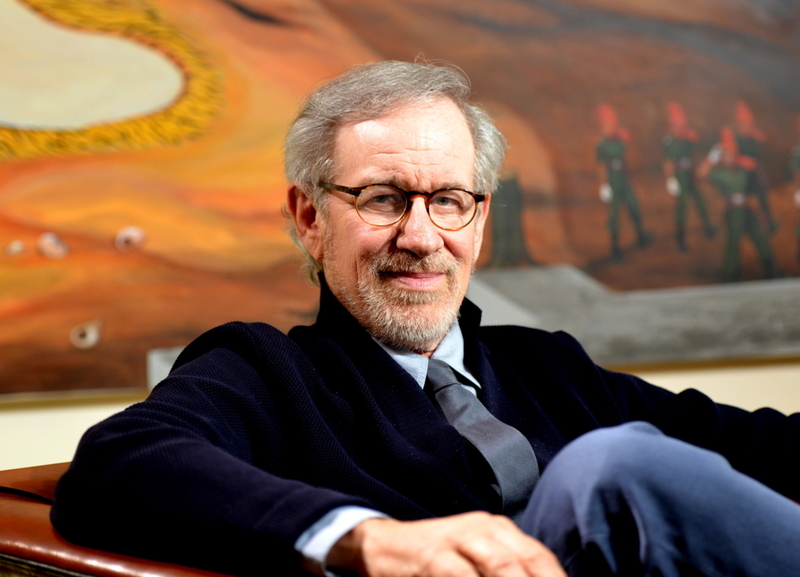
Cronenberg was also coming off a hit—the horror classic "Scanners"—and turned Lucas down for another opportunity. Lucas finally settled on Welsh director Richard Marquand because he admired his previous movie, the 1981 WWII spy thriller "Eye of the Needle."
Luke Almost Had a Girlfriend
Once Mark Hamill understood Lucas's grand plan with Vader as Luke's father and Leia as his sister, the actor proposed that Lucas create a potential romantic interest for Luke to enter the "Return of the Jedi."
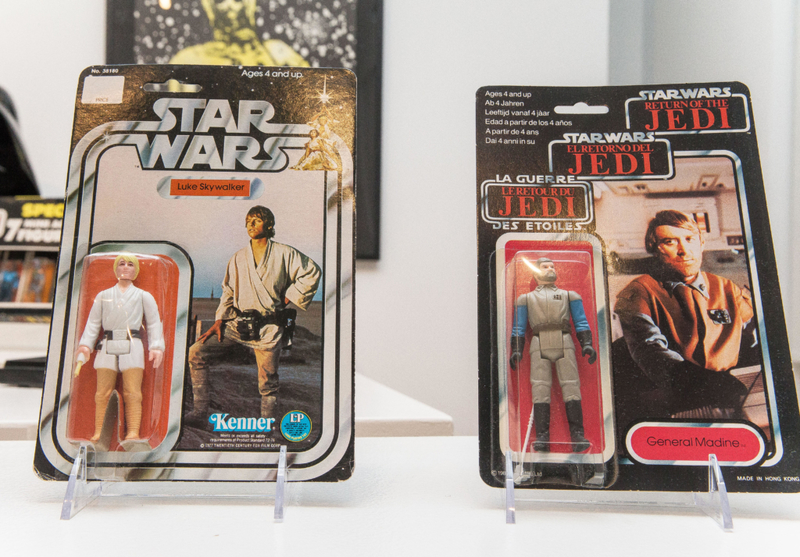
Hamill even sent Lucas a coffee table book of sci-fi art as a gift with his request to choose what she could look like from the book's designs. Hamill got his wish, and Luke eventually got a girlfriend and future wife, a fan-favorite warrior named Mara Jade.
Luke and Leia's Swing Across the Death Star
The comparably small production of "Star Wars" at England's Elstree Studios meant that a few corners had to be cut, even when it came to the main actors. Mark Hamill and Carrie Fisher had to do their own stunts for the iconic swing over the Death Star chasm because the production couldn't afford stunt doubles.
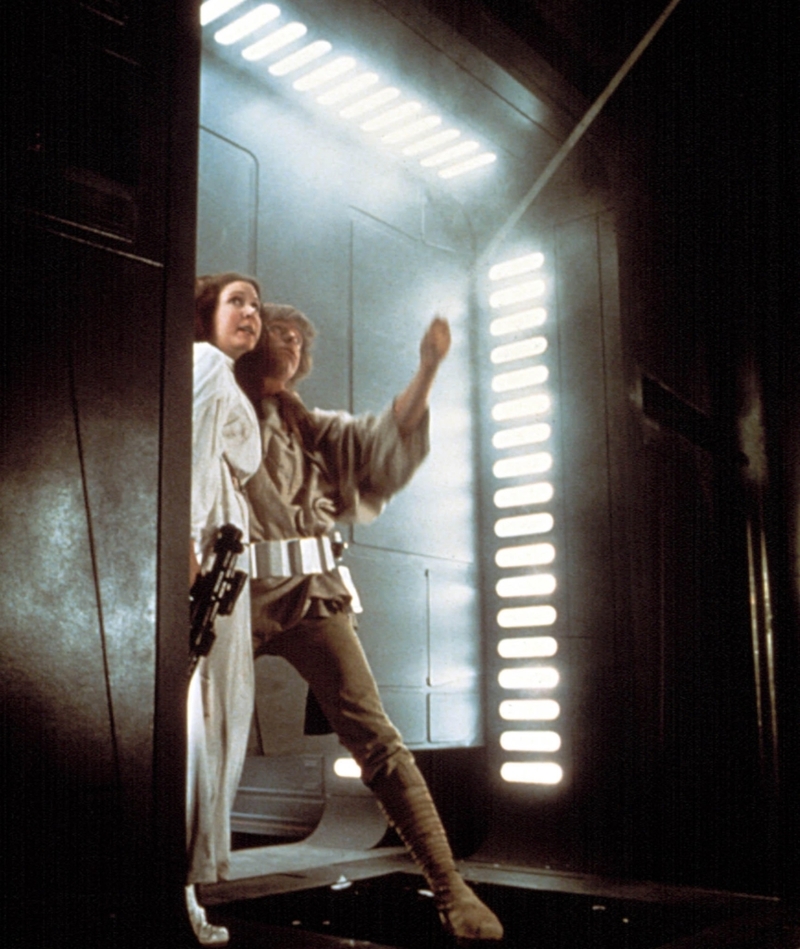
The actors were fastened with safety harnesses as they swung across the platform 30 feet above the studio floor, which is what you see in the final movie, and it was all done in one take!
Lucas' Initial Casting Plan
Lucas played with the idea of various casting differences at several points during pre-production. He flirted with the idea of having an all-black cast, then possibly using only Japanese actors (such as Toshiro Mifune as Obi-Wan Kenobi).
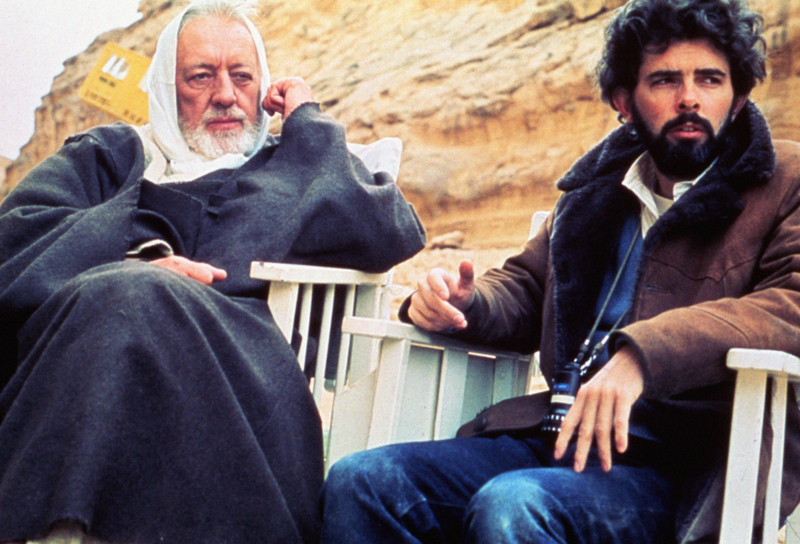
In an interview, Lucas addressed this and said that he thinks the idea he had was a little influenced by "The Lord of the Rings."
Lucas's Initial Draft Was Too Long
When 20th Century Fox gave Lucas a preliminary deal back in 1974 to eventually make the movie, Lucas turned in his "final" screenplay, which was more than 200 pages long! The average length of a screenplay is half of that! So Lucas removed the final two acts and presented the screenplay's first act as a complete story.
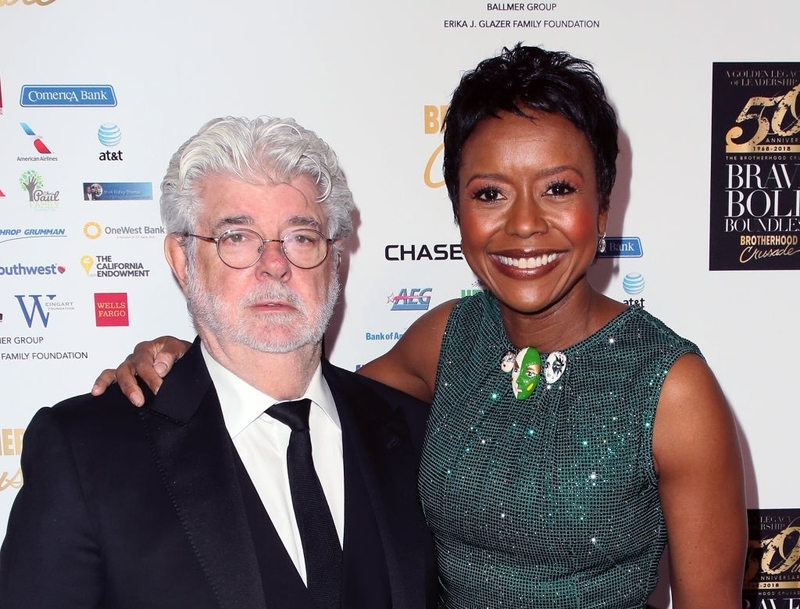
The script was fashioned into "Star Wars," and the final two acts of the original screenplay were eventually developed and elaborated into what would become "The Empire Strikes Back" and "Return of the Jedi." Luckily he kept the rest of his screenplay!
Lucas Relied on Akira Kurosawa for Inspiration
Lucas grappled with just how to tell this massive sci-fi space opera on a relatable and personal scale, and he found the answer in director Akira Kurosawa's 1958 film "The Hidden Fortress." It tells the story of a roguish general protecting a gorgeous princess from an evil clan behind enemy lines.
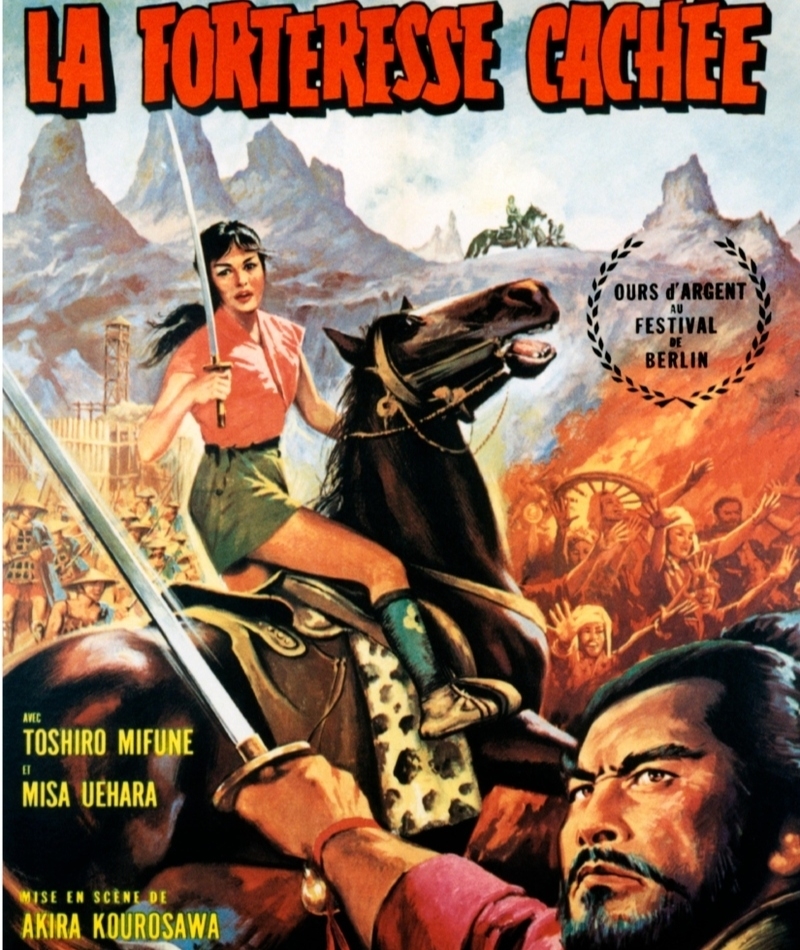
Lucas then decided that it would be a nice way to tell the "Star Wars" story. Lucas followed Kurosawa's lead as he took the two lowliest characters and told the story from their point of view. In the "Star Wars" case, those would be the two droids.
The Hero With a Thousand Faces
Even though George Lucas' story was equally inspired by westerns, fairy tales, and 1930s sci-fi serials, the framework for the original Star Wars back in 1977 around Joseph Campbell's book's ideas, "The Hero with a Thousand Faces."

The book followed common mythological motifs and argued that myths from around the world that have been carried down through generations—like King Arthur or Beowulf—share a basic structure. Lucas simply propagated these ideas into "Star Wars," with Luke as the main hero.
The Budget: How Much Did "Star Wars" Cost?
Lucas had to get 20th Century Fox to approve his then-massive budget of almost $10 million. However, the final budget eventually came in at around $11 million, and he pitched Star Wars with a series of 21 drawings he requested from illustrator Ralph McQuarrie.
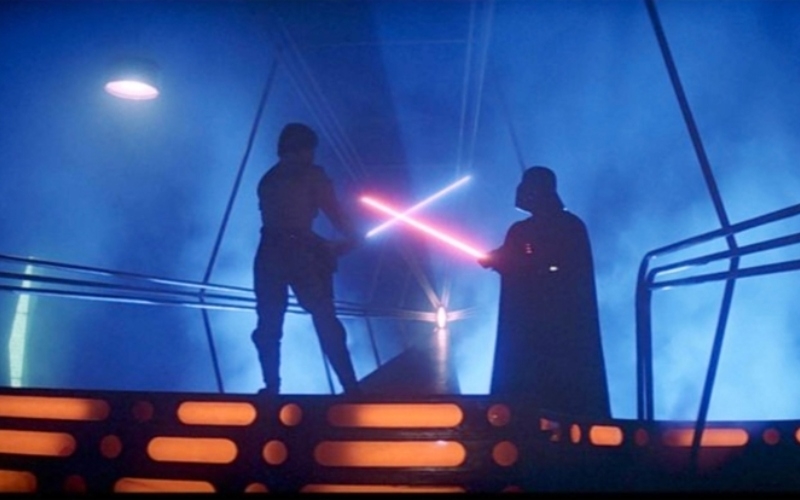
These included C-3PO and R2-D2 crash-landing on Tatooine, Vader confronting Luke with his lightsaber, the Millennium Falcon in Docking Bay 94, the Mos Eisley cantina, with a view of the floating city that would eventually become Bespin in "The Empire Strikes Back."
Yoda Was Almost Played by a Monkey
From a puppet performed by Frank Oz to a little green CGI man and back, Yoda has gone through a couple of changes. Thankfully, however, we never saw him as the initial way George Lucas imagined the character – played by a monkey. This almost seems like a joke until you see the pictures from the screen test, which has a little monkey being measured and carrying Yoda’s cane. However, crew members realized early on that the monkey wasn’t the right choice to portray the character.
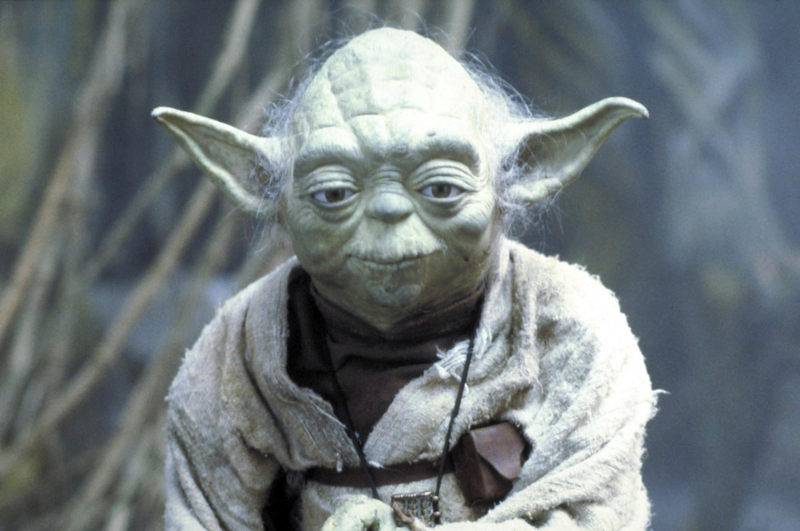
Honestly, thank goodness. There are plenty of weird elements in the original trilogy, but having a monkey play an important character just wouldn’t have worked. One crew member realized the monkey would continuously pull the mask off, making it impossible to film for any extended period of time.
Making the Opening Text Crawl
The opening text crawl of the first movie is one of the most famous starts to any movie, at any time. Instead of having to sit through a bunch of names, we get thrown right into the action with all the information we need. We learn about the Empire, the Rebellion, and the plans for the Death Star. Then we transition down to Princess Leia’s ship and we’re off.
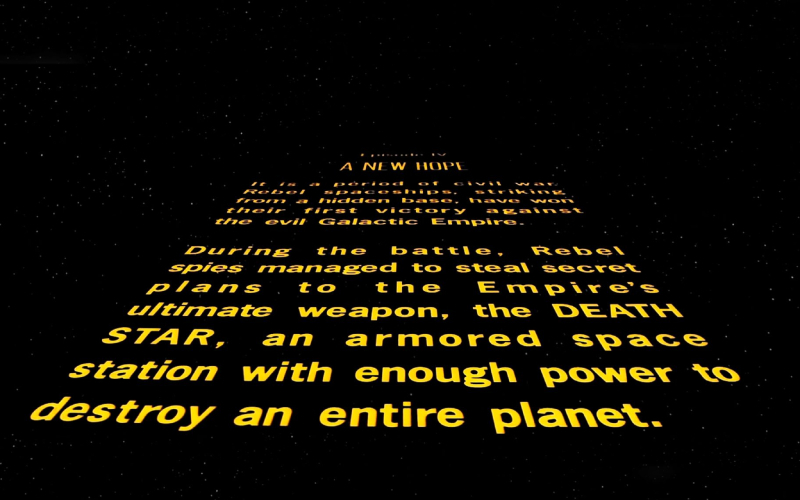
Apparently, it took hours to film this opening piece of text, since the filmmakers had to place large yellow letters on black paper as the camera slowly passed over the text, mimicking it crawling up the screen. Nothing goes quickly when it comes to making good movies, but this apparently took three hours. Nowadays it can all be done with computers in just a couple of minutes.
A Weapon for a Civilized Age
When Lucas got to coming up with a weapon that the Jedi could use to bring peace back to the galaxy, he knew that a boring old laser gun wasn’t going to cut it. But the lightsaber went through quite a number of different versions before we got the simple hilts we all know and love. It started as the flash attachment of a “four by five” camera, removing the round flash part.
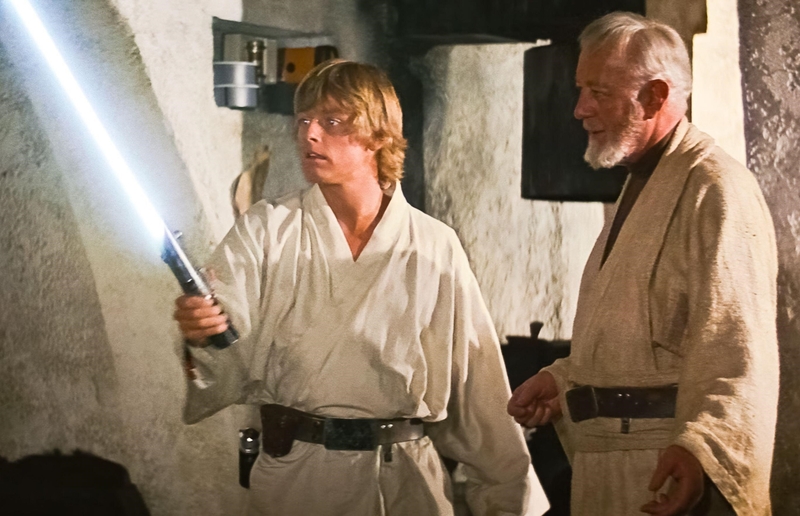
Then they became rotating poles with reflective tape in order to simulate the flash of the sabers that would shine on the actors. Nobody really liked this, so they quickly stopped using it. As CGI technique improved, they were able to move on to simply holding swords so the actors could dual for real.
A Little Bit of Smoke and Mirrors
Even so long after the first movie came out, a lot of the effects still look amazing. One of them is when Luke’s X-34 Landspeeder zoomed over the sandy wasteland of Tatooine, hovering over the ground. This effect was cleverly done by a couple of mirrors. By adding a couple of mirrors to the bottom of the vehicle, which actually had wheels, it looked like the speeder was floating above the ground.
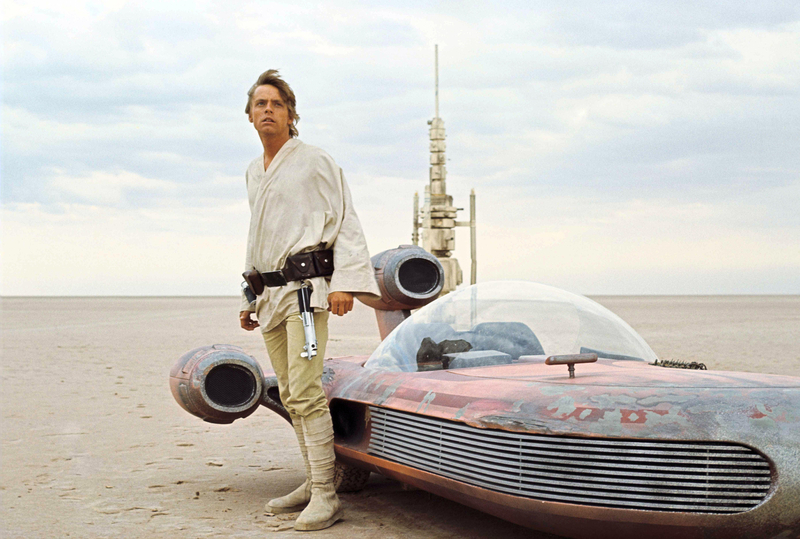
It also seems as if the Landspeeder had a couple of different versions, and the version with the mirrors was only used to provide the wide shots that we see a few times. So simple and yet so effective. Maybe this could only be done with the wide shots because otherwise, the mirrors would have been too obvious.
Worth Four Men
Darth Vader is perhaps the most famous character in all of movie history. He’s tall, imposing, an incredible villain, and a tragic figure. In just the original trilogy, however, it took four total men to create this amazing character. Everybody knows about David Prowse, who provided his imposing frame, and James Earl Jones, who used his strikingly deep and melodious voice to make Darth Vader even more memorable.
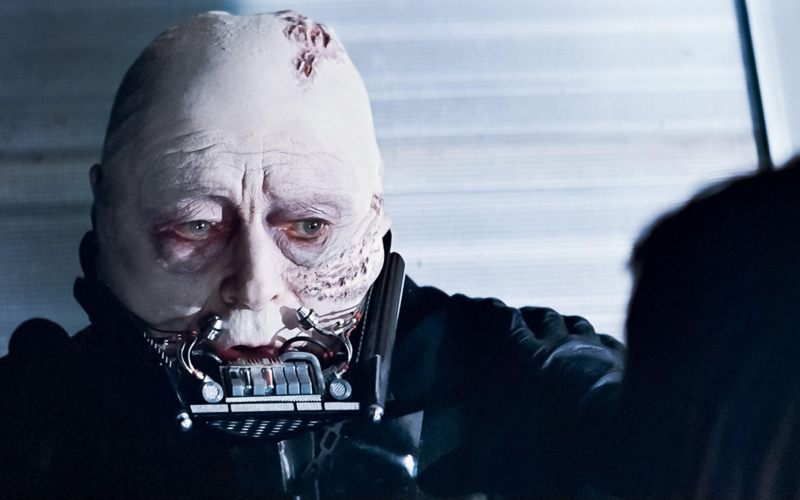
However, there was also Bob Anderson, who is a pro fencer and was Prowse’s stunt double during the lightsaber battle scenes. At the end of “The Return of the Jedi,” when Darth Vader is unmasked, the face of the dying Vader is provided by Sebastian Shaw. Shaw had to get plenty of makeup to look like he was an aging Sith lord who had just gotten the heck beaten out of him.
A Classic Technique
In the first film, before the movies got a much bigger budget, the characters go to a whole lot of fun places. The Death Star, Mos Eisley, and the forest moon of Yavin. There was no way for the production to film places like these and not blow the budget out of the water, so they went with a classic technique of the time – matte paintings!
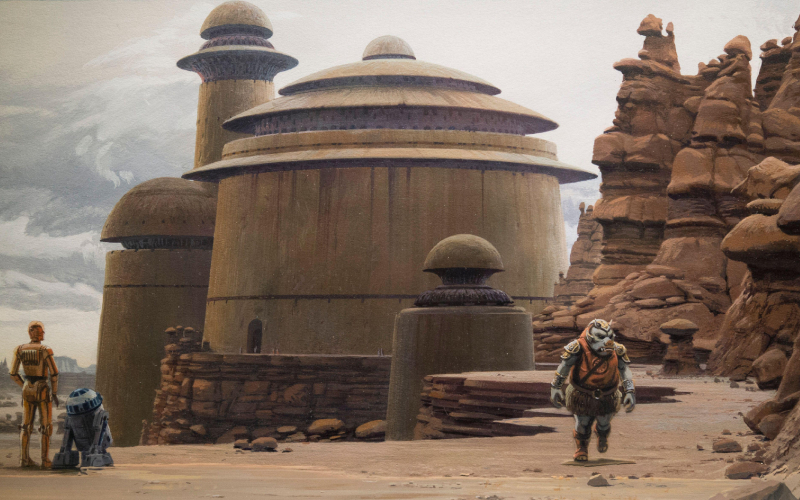
You may be familiar if you watched any of the earlier Star Trek series. They were simply big paintings that filled out a scene. This includes not only shots of inside the Death Star, but Jabba’s palace, the wide shots of snowy Hoth, and plenty of other scenes from the original trilogy. In later movies, CGI would once again replace these practical effects, but we still love these big paintings.
The Little Guy on Set
The first Star Wars movie had an incredible range of actor heights. Not only was there David Prowse as the hulking Darth Vader and the super tall Peter Mayhew as Chewbacca, but there was also Kenny Baker, standing a whopping three feet, eight inches, who was stuffed inside the R2-D2 costume. He controlled the little droid, making it possible to have Artoo present without needing any more special effects.
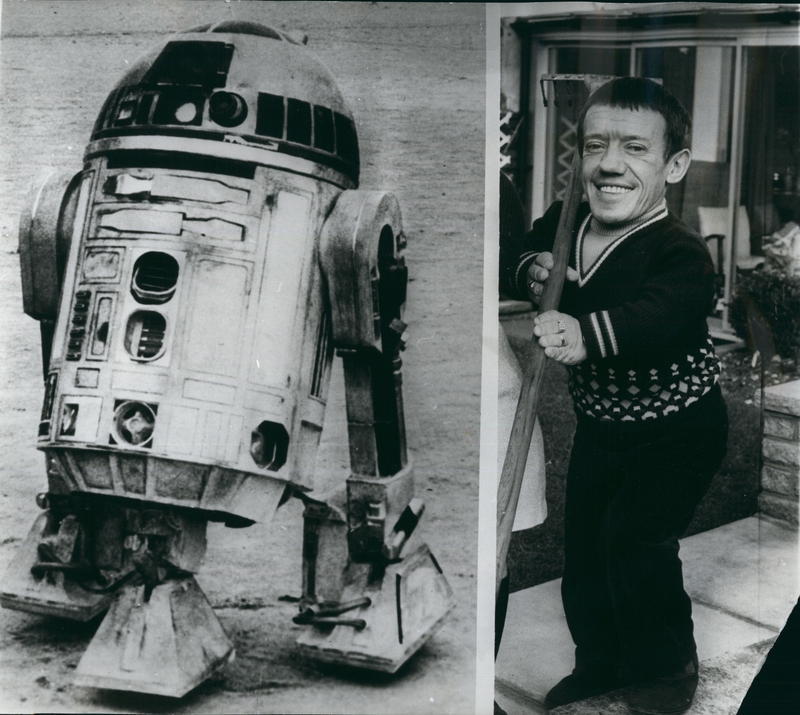
Baker almost didn’t take the role, since he didn’t want to be stuck inside a robot for all that time, but he was broke and needed the work. It ended up changing his life, and he is one of if not the most famous little person actors in the world. He didn’t even have to memorize any lines – the beeps and whistles were added later.
All the Different Models
Thanks to the many things that had to show up on-screen during the original trilogy, the people who made the models had to basically be working around the clock in order to keep up. It took three and a half million dollars and nearly two years to make all the miniatures that would go into the optical effects and shots of the original trilogy, and it was all made by a Hollywood special effects house.
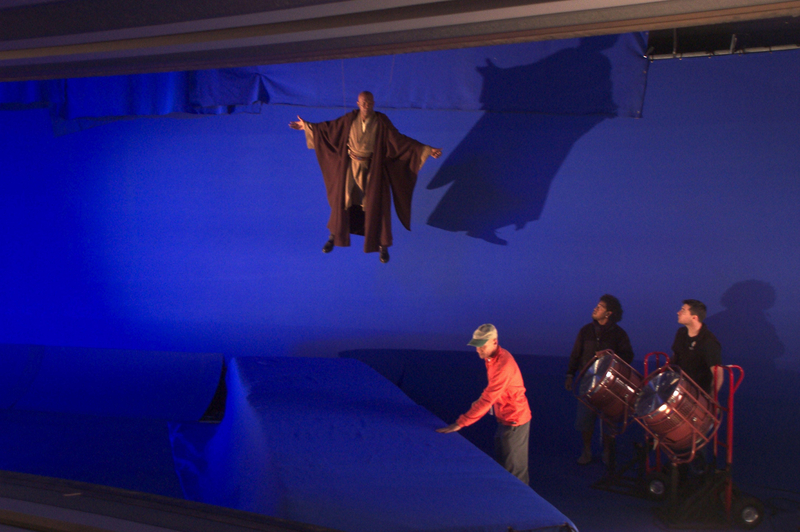
These models would be filmed against a blue screen so that backgrounds and other elements could be added later. They even filmed miniature explosions so that they could drop the explosions into space battles or other sequences. The people filming these often used stop-motion photography or other camera tricks, which gave them more leeway for using the models.
Far Too Much Stress
George Lucas was the mind behind almost all of the Star Wars movies, and that means he took on a whole lot of tasks. Even during the first Star Wars movie, Lucas was under so much pressure and trying to come up with so many things to make the movie work that the stress was becoming unbearable. He started to feel severe pain in his chest, and checked himself into the hospital, fearing that it was a heart attack.
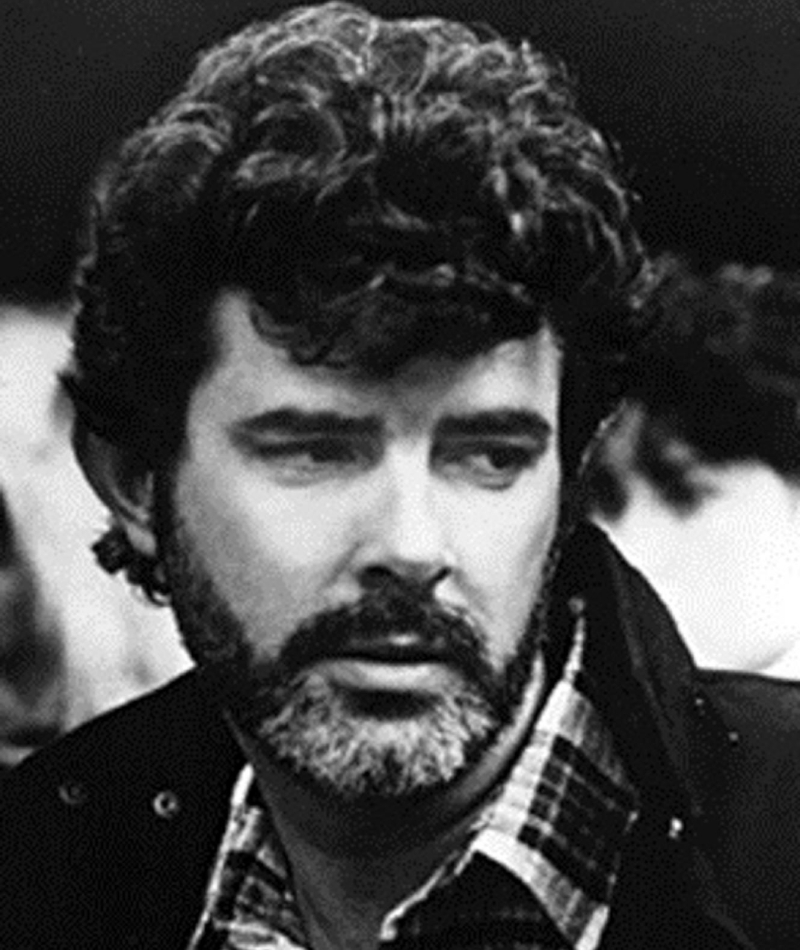
It was “merely” hypertension caused by stress, but it could have been a lot worse if he had ignored it. Yet Lucas was committed to seeing the movie finished the way it should be, despite the fact that it could have been deleterious to his health.
One of the Many Ideas
There were a lot of options for how this trilogy could have ended. Han could have died, Luke could have run away, and a million other things. But one option was quite a bit different from how the final movie actually ended. While “Return of the Jedi” ends on a mostly happy note, though a bit bittersweet, it almost ended out quite a sour moment.
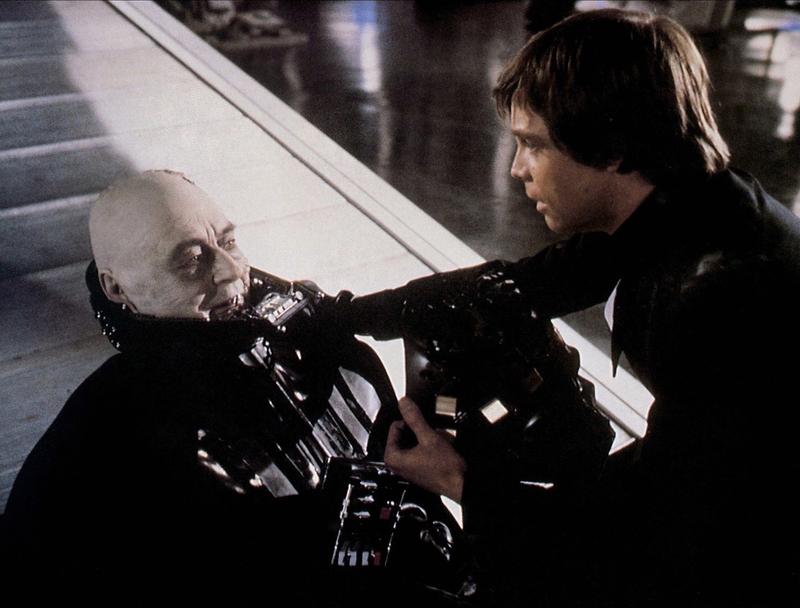
One of the early scripts had Luke kill Vader – his father, remember – take Vader’s helmet off the body, and put it on his own face, proclaiming that HE was now Vader, and was the new ruler of the Galactic Empire. It certainly would have been bold, but it just wasn’t the story Lucas had been building toward. Plus, lots of fans looked up to Luke Skywalker.
Only One Person Believed in It
When the final cut of the original Star Wars movie was finally done, almost everybody that Lucas showed it to thought it was terrible. Yet there was one person who still believed in the movie: Steven Spielberg. And if you can’t trust Spielberg when it comes to movies, who can you trust?
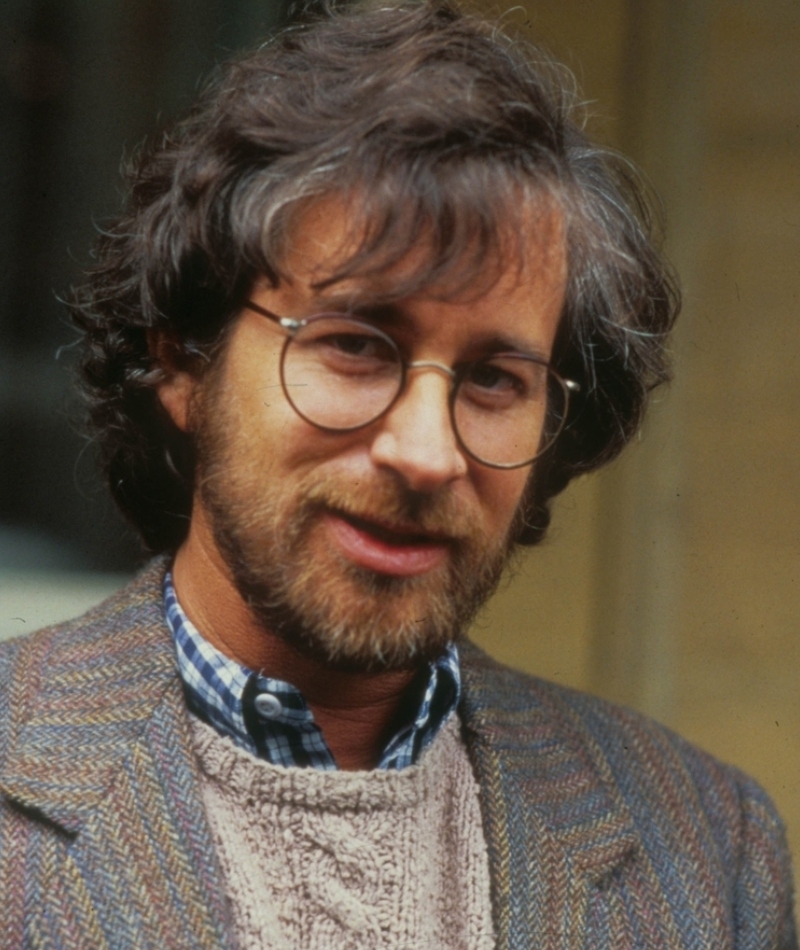
While Steven probably didn’t know just how amazing it would turn out to be, he still thought it would be a successful blockbuster, and Spielberg practically invented the blockbuster. He wasn’t as famous at the time, but he still thought it would do well. After the movie was done, Spielberg and Lucas both happened to take a vacation in Hawaii, and when they returned they found that Star Wars wasn’t just a blockbuster – it had become one of the most famous movies of all time.
Staying Comfortable
Despite Darth Vader being one of the most famous movie villains in the entire world, the original Star Wars movie had another intimidating bad guy: legendary actor Peter Cushing as Grand Moff Tarkin, who commanded the Death Star and could even order Darth Vader around. He had the cheekbones made for being a villain. However, it turns out that Tarkin was only intimidating when the camera didn’t show his feet.
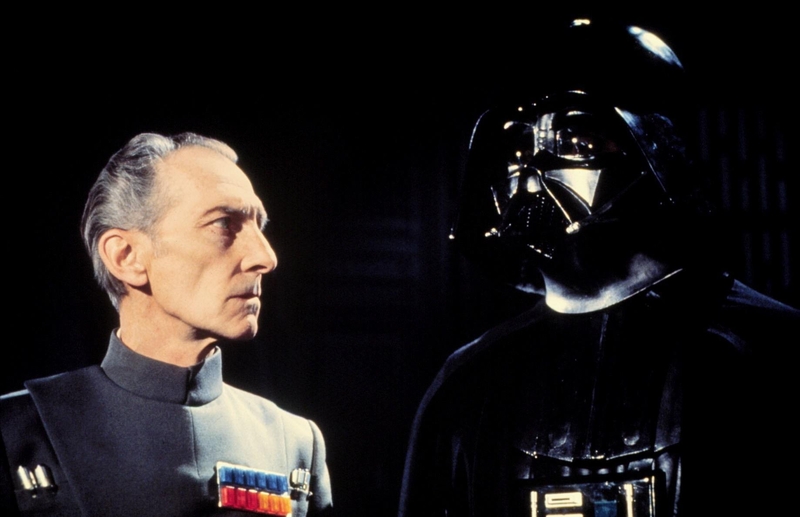
The boots that went along with Tarkin’s outfit were apparently so uncomfortable that he refused to wear them if his legs weren’t in view. Instead, he opted for a pair of fuzzy slippers. Yes, that means during the scenes when he’s threatening Princess Leia with torture and ordering around a Sith Lord, he has some fuzzy slippers on his feet.
Keeping Things a Secret
Since David Prowse did the physical acting for Darth Vader and James Earl Jones provided the voice later on, it gave George Lucas a good opportunity to keep one of movie history’s biggest secrets on the down low. At the end of “Empire Strikes Back,” Vader tells Luke that they are father and son, but while filming the scene, Prowse actually says that Obi-Wan had killed Luke’s father.
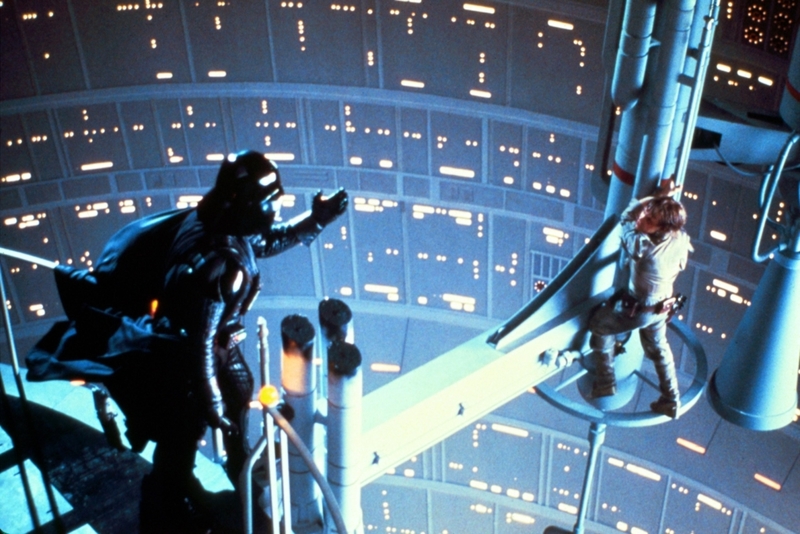
While Jones knew the truth, only a mere three other people were also aware: Lucas himself, the film’s director Irvin Kershner, and Luke’s actor Mark Hamill, who needed to respond in the proper manner after his character was given such a big blow. That means even all the people who worked on the movie were shocked when they saw the finished film in the theater!
Because the Armor Fit
Boba Fett, the classic Mandalorian and bounty hunter, shows up for the first time in “Empire Strikes Back,” and he almost immediately becomes a fan favorite. He had amazing armor, a bunch of cool tricks up his sleeve – literally – and was silent and dangerous. But what did he look like under the armor?
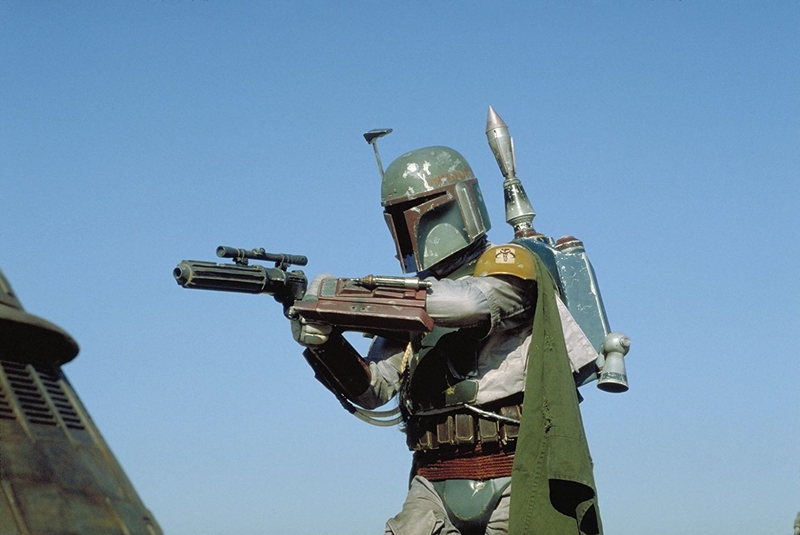
He was played by Jeremy Bulloch, and he was picked for the role only because the armor fit him properly. His half-brother, Robert Watts, had to find something to fit the suit and asked Bulloch to try out for the role. The wardrobe crew discovered that it fit him perfectly, and so he became Boba Fett’s physical performer for the remaining movies of the trilogy. He doesn’t play the role anymore, but he was still the first.
Plenty of Stories in His Head
Before he had even finished making the first film, George Lucas was dreaming up ideas for plenty of sequels. His grand plan for the series was three film trilogies, with three films to bridge the gaps, coming up to a total of twelve films. We have the three trilogies, for better or worse, but we only have a pair of stand-alone films: “Rogue One” and “Solo.”
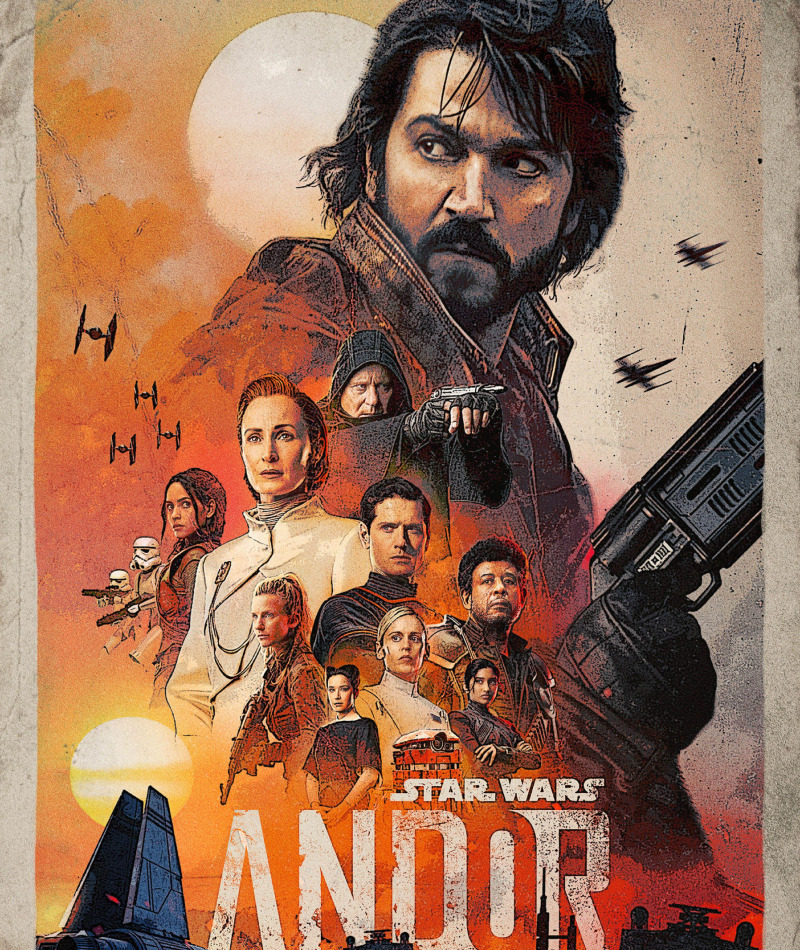
Maybe there is something else in the works, but it seems as if most of the story has been relegated to the shows that are popping up on Disney Plus every few months. Once again, for better or worse. “Andor” was pretty darn good, and “The Mandalorian” is fun, but a lot of the other options are a bit...lacking.
The Potato in Space
There are a lot of asteroids out there in space, but they aren’t all that easy to film for a movie. So the crew for “The Empire Strikes Back” had to come up with a couple of easy ways to get enough asteroids for their scenes in the asteroid belt. It’s generally accepted that one of the asteroids is a potato, but it’s proving tough to know exactly which one during the many scenes of the Millennium Falcon flying through space.
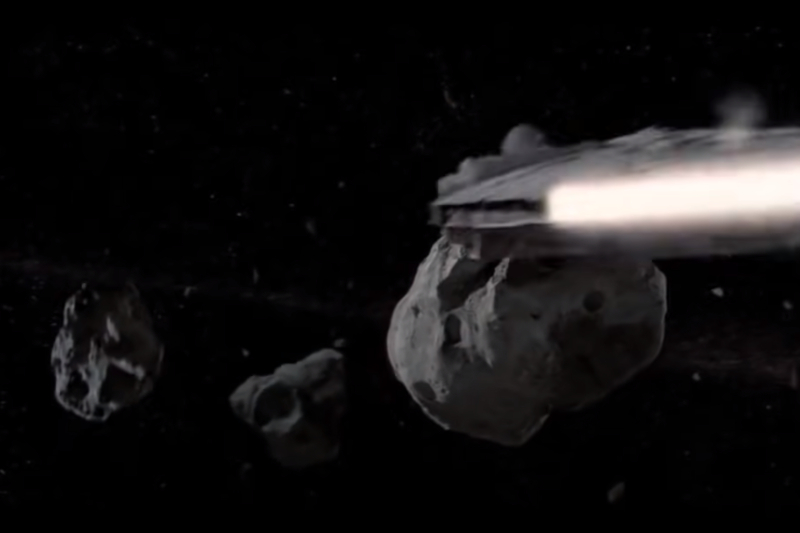
There’s also a myth that one of the asteroids is a tennis shoe, but this is simply because they used a tennis shoe as an easter egg in the space battle at the end of “The Return of the Jedi.” It’s right at the beginning of the battle, as the Millennium Falcon is zooming through TIE fighters. It’s barely visible drifting through space as part of the fleet.
Pretty Much Everybody Wanted Han Solo to Die
Giving a story emotional weight is an important trick in a writer’s toolbox, and one way for them to do it is to kill an important character. Co-writer Lawrence Kasdan and Harrison Ford both thought that Han Solo should die at some point during the original trilogy, but Lucas wasn’t going to have it.
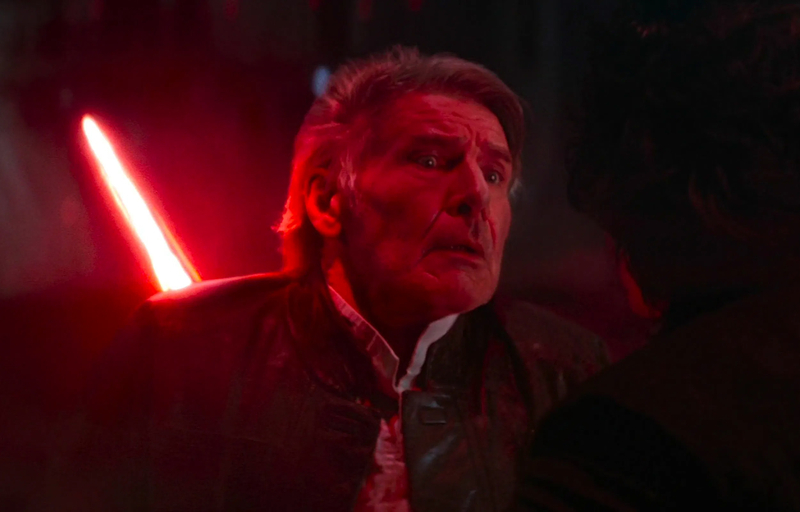
Ford wasn’t sure if he wanted to come back for the final of the three movies, which is why Solo was frozen in carbonite – it could have resulted in his death. Ford would eventually get his wish more than thirty years later in “The Force Awakens.” We hope we didn’t just spoil that for anybody, but it’s been almost ten years since that movie came out.
Prowse Actually Spoiled a Twist
It seems that David Prowse, the physical actor for Darth Vader, was a bit of a blabbermouth. He actually spoiled the fact that Vader is Luke Skywalker’s father, but it was several years before the second movie in the trilogy even came out. He spoiled it two years before “The Empire Strikes Back,” in 1978. That was only one year after the first movie hit the silver screen.
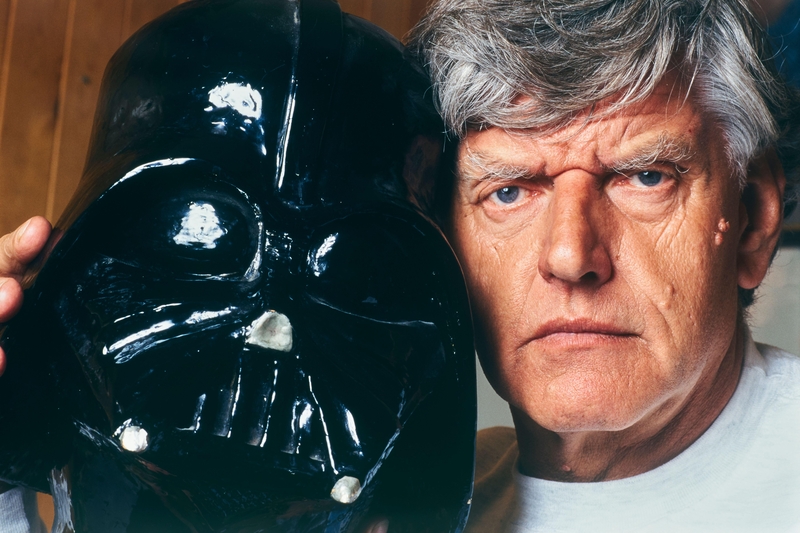
In an interview with the “San Francisco Examiner,” Prowse revealed that Luke learns Darth Vader is, in fact, his long-lost father. However, this was likely just speculation on his part, as the script for the second movie might not have even been finished at that point. He managed to be correct, but it was just an interview in one paper long before the internet happened, so not a lot of people took notice of it.
Losing a Moon
In the original and stirring scene of Luke Skywalker looking over the dusty plains of Tatooine, as the “Force Theme” plays, we see the two suns of Tatooine floating over the horizon. It turns out that, in OG trilogy lore, the planet also has two moons, as seen in the first shot of the planet. However, in a nighttime scene on the same planet in “Attack of the Clones,” there is a third moon, one that is much bigger and brighter than the other two.
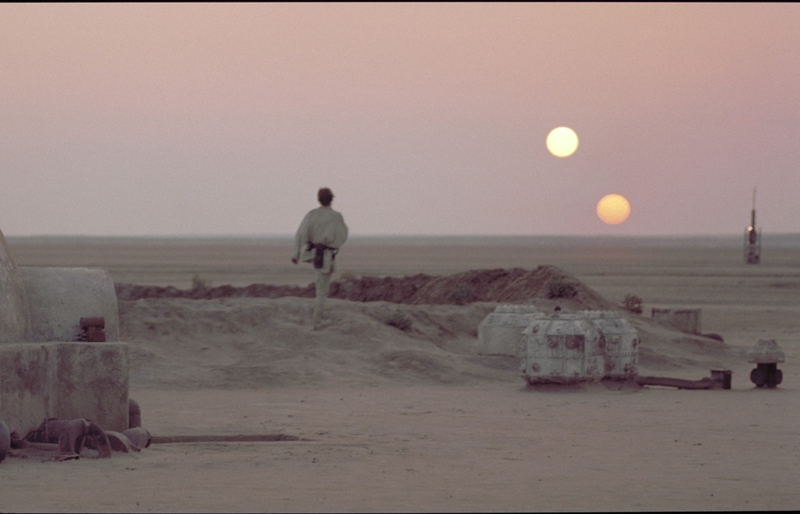
While this was likely done in order to give the night scene more natural light, fans were confused about the addition of the moon. Still, it’s easily explained by the third and biggest moon being on the other side of the planet during other scenes set on the planet. We’d wonder how three moons would affect the tides of the planet, but not a whole lot of tides on that desert world.
The Other C-3PO
Early on in the first movie, R2-D2 and C-3PO are taken in by Jawa scavengers and traded to Luke’s family. We see a bunch of scrap while inside the Sandcrawler, but it takes a sharp eye to notice that there is another C-3PO, right next to the first one! It’s another gold protocol droid that is right next to the original, seemingly missing pieces of its head.
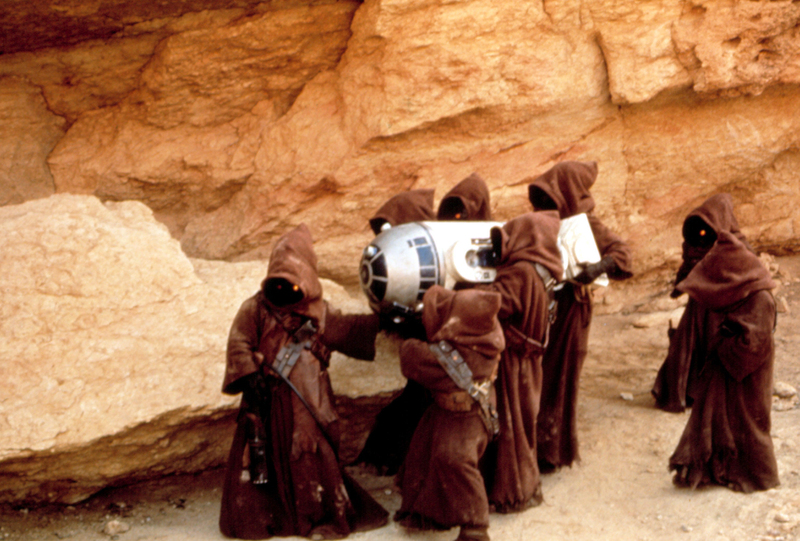
This was probably just an extra C-3PO costume that they had on set, modified in order to make the scene busier and fuller. For some reason, they placed it right next to the actual C-3PO, though the shot is dark and busy enough that it isn’t all that easy for viewers to pick it out before moving on to the next shot.
Some Weird Editing
For the most part, the editing in the first Star Wars movie was brilliant. However, one scene got a bit jumbled up in the final cut of the film. As Luke Skywalker is talking with Obi-Wan Kenobi in the latter’s desert home, C-3PO decides to shut down for a while. However, the next scene set there, when R2-D2 plays Leia’s message, has C-3PO awake again.
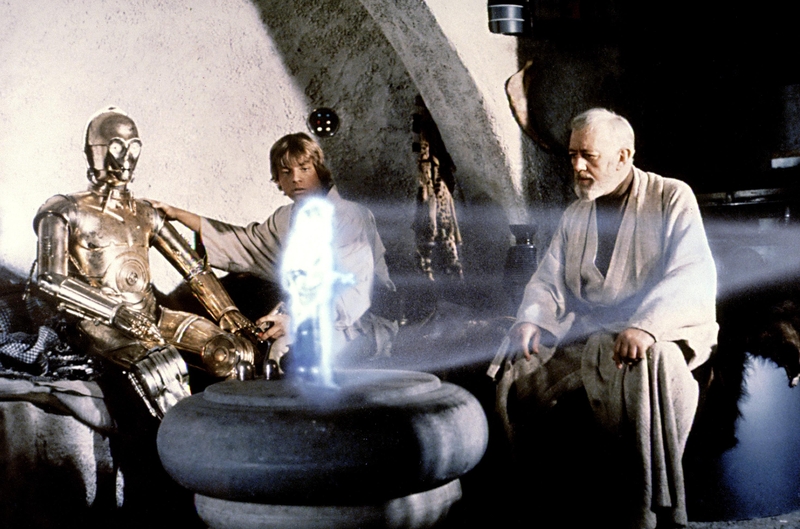
The team did this because it improved the flow of the movie a little bit, but they were scripted and shot in the opposite order. Fan edits such as “Star Wars Revisited” have recreated the scene in the order it was originally shot, which shows us how Luke’s conversation with Obi-Wan would have gone had this change not been made.
That Number Sounds Familiar
A big part of the very first movie was Han, Luke, Chewie, and the other characters rescuing Princess Leia from her cell on the Death Star. After some struggles, they eventually find her relaxing in cell 2187, and then things go downhill from there. This number comes up again in “The Force Awakens,” which was a little criticized for having a few too many callbacks to the original trilogy, and “A New Hope” in particular.
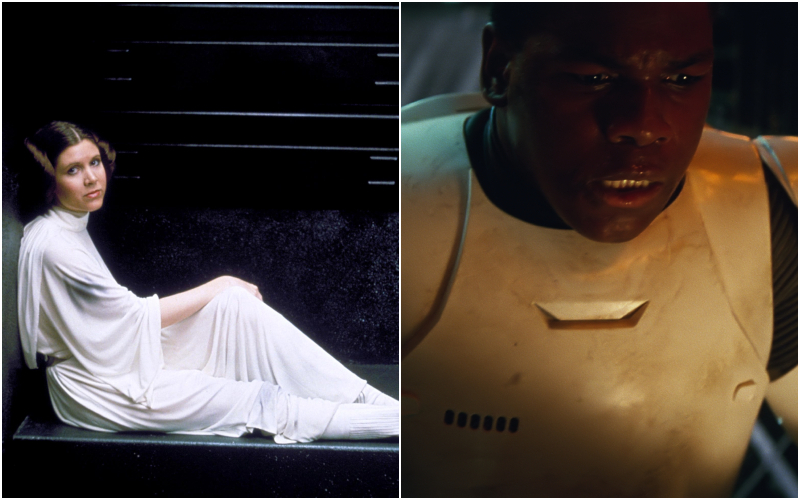
The number 2187 comes up again as part of Finn’s stormtrooper designation, which is FN-2187. He uses the two letters to come up with a name for himself, as he had been brainwashed by the Empire and didn’t know what his parents – if he even had them – named him.
Editing Out Dear Old Dad
The different versions of the original trilogy take out and add in a bunch of things that had fallen to the cutting room floor over the years. One example in the Special Edition of “A New Hope” is when Luke runs into his old friend Biggs Darklighter. However, the original version of the scene had Biggs mention that he knew Luke’s father (this was from before Vader was going to be Anakin Skywalker).
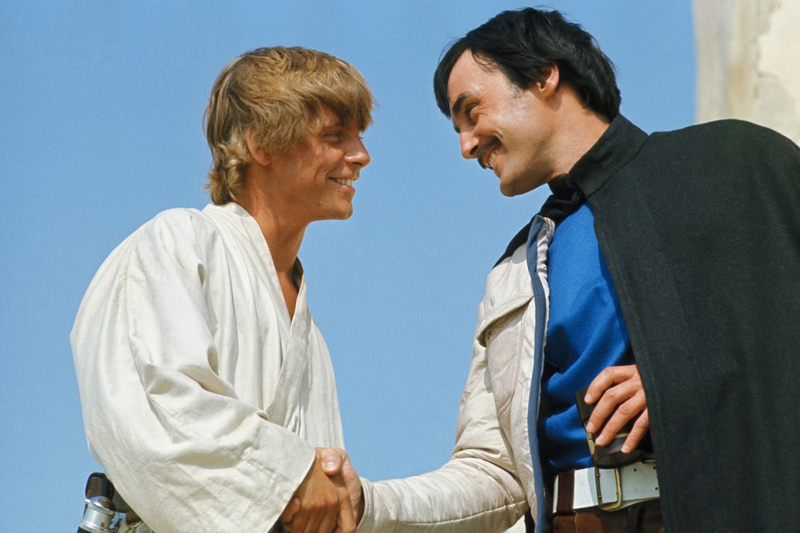
In order to avoid a silly and obvious contradiction, the Special Edition had another pilot walk in front of the trio to hide that a section had been cut from the scene, which allowed the rest of the scene to continue. It was a bit of clever editing that allowed the audience to get invested in Luke’s friendship with Biggs before Biggs goes down in the movie.
Echo Base Warning Sign
During the tumultuous scene of the attack on Echo Base at the beginning of the second film in the trilogy, the two droids can be seen walking past a door that has a yellow and red warning sign hung on it. This references a deleted scene, in which the rebels find a bunch of wampas, the ferocious snow beasts of the planet that had been living in the ice caves.
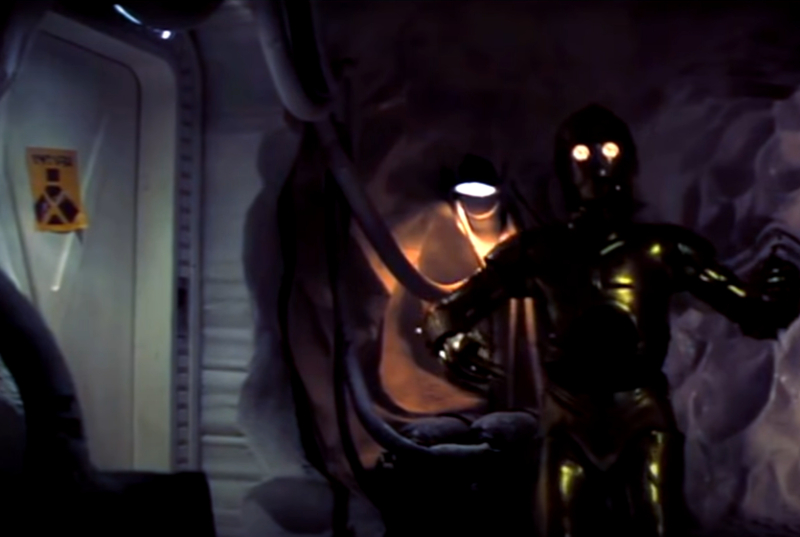
The wampas were trapped behind the door with the sign, and during the imperial attack, C-3PO would have ripped down the sign, leading to snowtroopers entering the door and being viciously mauled. It sounds like it would have been pretty funny, but apparently, the wampa suits didn’t look that good on camera, leading to the small sub-plot being removed from the final film.
We Feel Kinda Sorry for Him
The movies put a ton of detail into the world-building and scenes, but the action sequences got a lot of detail, too. An extremely easy-to-miss moment during “The Empire Strikes Back” is when a TIE fighter slams into an asteroid during the middle portion of the movie. That’s easy to see, but one thing that is often missed is that you can also see the TIE fighter’s pilot disintegrating after his ship blows up.
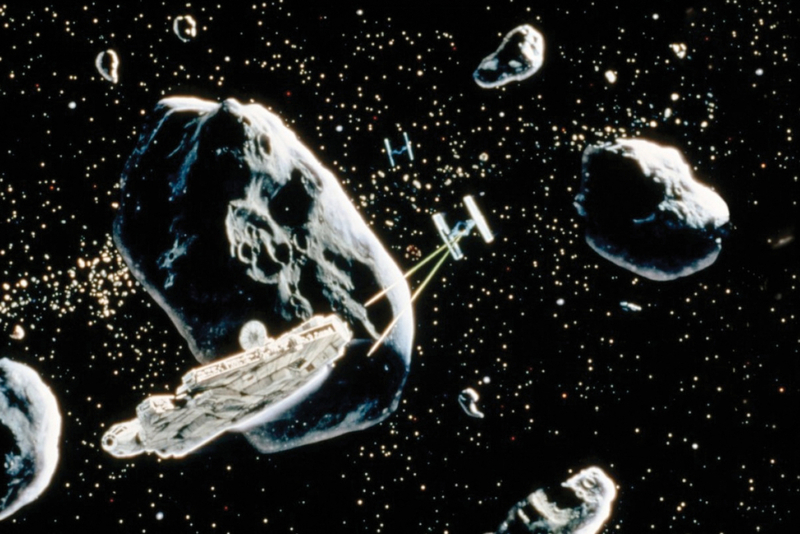
For some reason, the VFX team came up with the idea to have the pilot’s small model get thrown from the explosion. In the scene, it can be hard to catch unless you’re looking for it, and it makes this dangerous space battle even more intense. We’re guessing the pilot didn’t last much longer.
A Helpful Body
Darth Vader proved that he was a threat to anybody and everybody around him, when he started choking out people on his own side, such as Captain Needa in “The Empire, Strikes Back.” After Needa accidentally allows the Millennium Falcon to escape Hoth, Darth Vader takes his ire out on Needa’s trachea, killing him. After his body collapses to the ground, a pair of security officers are seen removing it from the room. Talk about a tough day job.
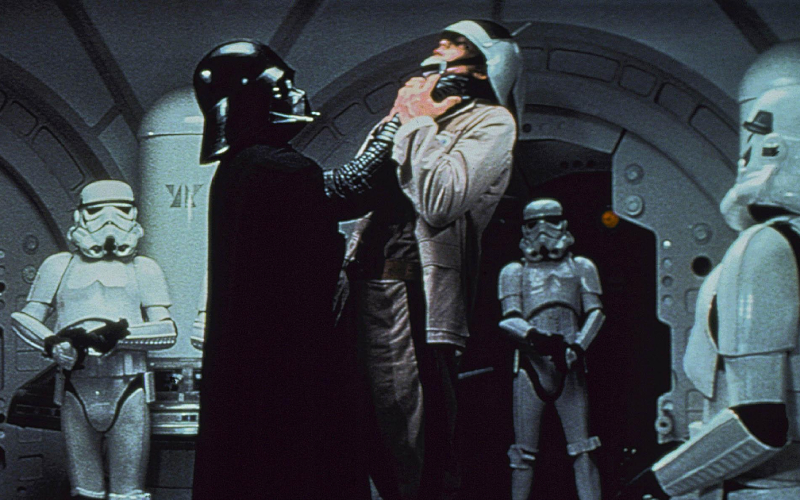
However, as the security officers start to carry the body away, it’s seen assisting them, standing up as they haul it away. This is all just due to the actor, Michael Culver, trying to make things easier for the other cast members, but it looks way too goofy if you catch sight of it.
A Side Story
In Episode V, a big group of bounty hunters are sent after the Millennium Falcon. This includes the famous and fan-favorite Boba Fett, but it also has the odd character of IG-88, a droid bounty hunter. What better than a creature that doesn’t need sleep, food, or any other necessary reasons to stop? It can just keep hunting, like the Terminator.
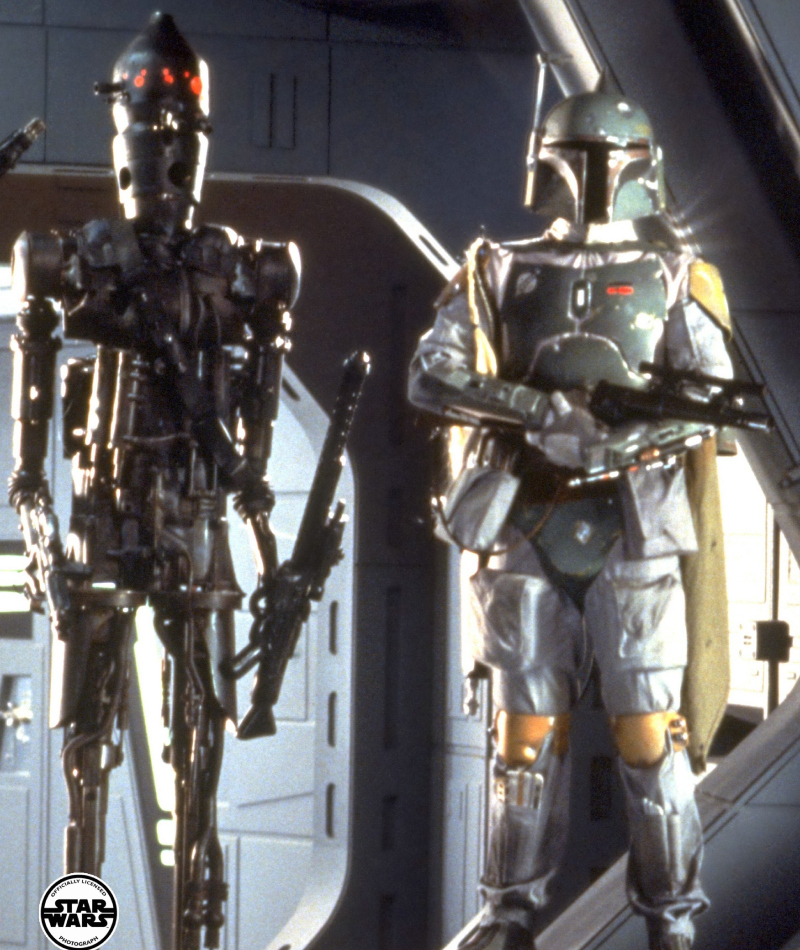
However, it seems that Fett wasn’t willing to let his rival have a chance to take his quarry. Boba Fett destroyed the robot bounty hunter and dumped his junked remains in a pile, which is also where Chewbacca finds C-3PO while in Cloud City. A keen eye will let you see him during that scene. However, IG-88 was, canonically, restored and continued acting as a bounty hunter for the rest of the Galactic Civil War.
Switching Sides
Lando Calrissian was one cool cat, but his loyalties were constantly a worry in the movie in which he appeared, “The Empire Strikes Back.” However, by the time of “The Return of the Jedi,” he’s firmly on the side of the good guys. Still, sharp-eyed viewers of episode VI can view a continuity error when it comes to Lando’s outfit.
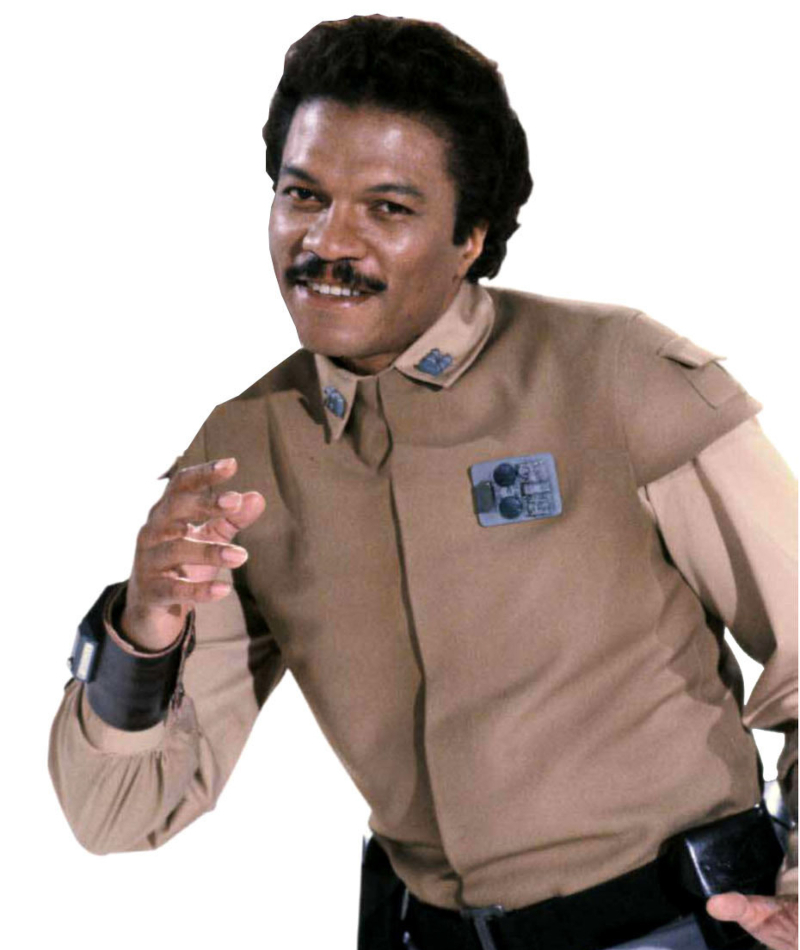
In the scene in which Han offers Lando the Millennium Falcon to pilot during the big attack at the end, Lando’s rank insignia (that of a general) is on the left side of his uniform. However, during close-ups, it somehow switches to the right side. Even the simplest movies have a lot of details to get right, and if you have to do some re-shoots or come back to a scene at a later time, getting things just right can be a hassle.
Working on His Story Skills
C-3PO is perhaps one of the most peculiar characters in the original series. He’s a fussy little droid that is better suited for board rooms than space adventures. He even tells Luke near the beginning of Episode IV that he isn’t very good at telling stories when Luke presses him for information about the rebellion. It makes a lot of sense based on his character, but it doesn’t stay that way.
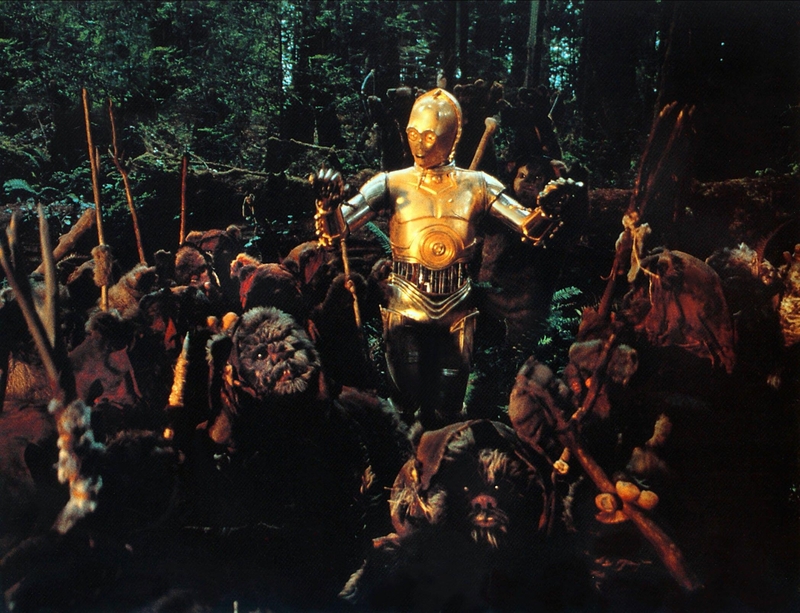
In the middle of Episode VI, C-3PO is taken by the native Ewoks and made out to be some sort of leader. He has to quickly come up with a story that will save his friends Luke, Han, and Chewie, and the Ewoks with their adventures over the last two movies. It’s an easy-to-miss change in the character, but we guess even droids can learn new skills.
Friendly Fire
An odd detail that is easy to overlook near the end of “The Return of the Jedi” is when Luke is pulling Darth Vader into one of the launch bays of the second Death Star, which is moments from exploding. While there are explosions all over the station due to the battle, it’s also possible to hear blaster fire during the scene – but there weren’t any other members of the Rebellion onboard. So who was shooting?
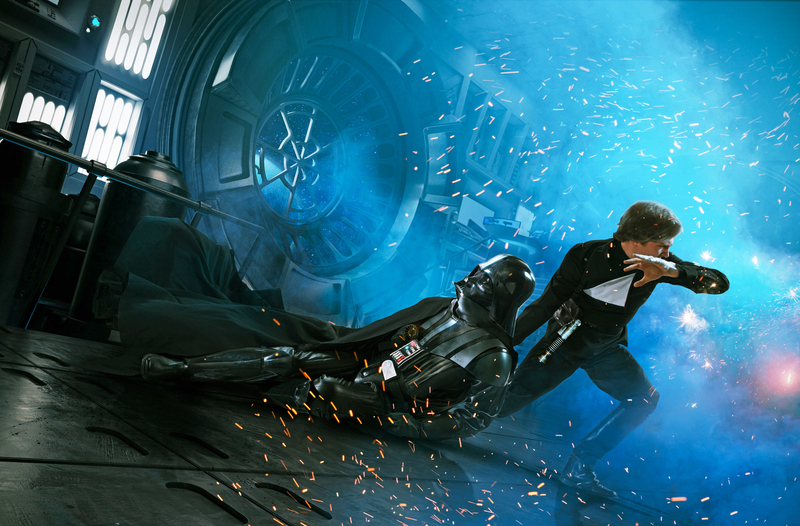
One possible explanation is there weren’t enough ships to get everybody off the Death Star, and they were shooting each other to keep their ships from being stolen, or to steal ships. It’s quite a dark plot point, but it would make sense in context – they know they don’t have long, and they’re just trying to save their lives.